

Transport in Japan: Exploring Buses, Public Transportation, Railways, Bicycles, and Major Cities
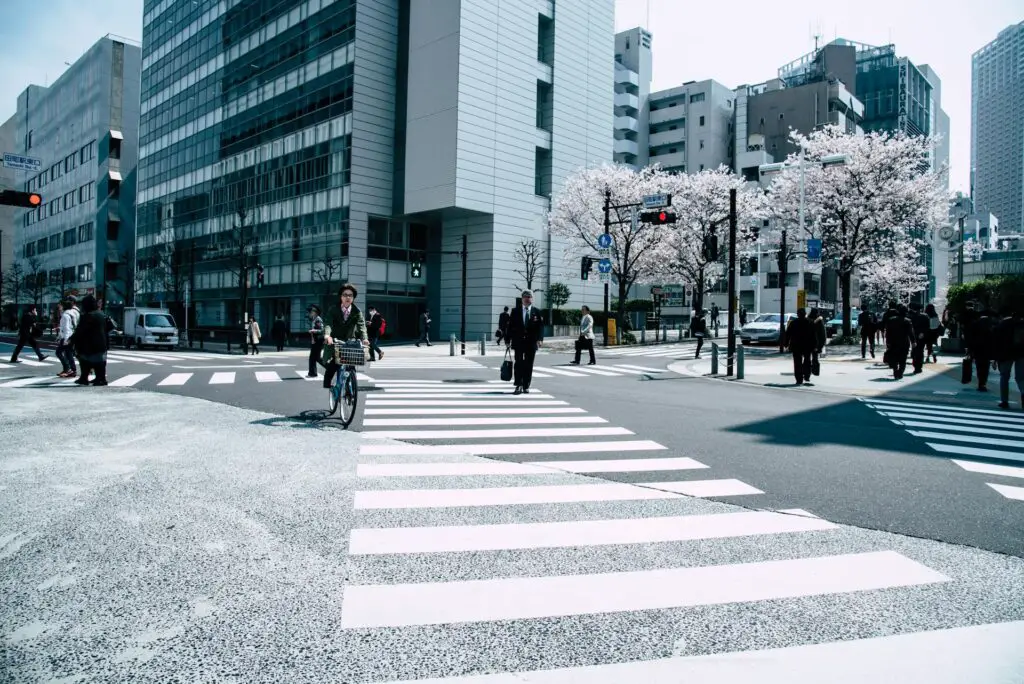
Did you know that Japan boasts one of the most punctual railway systems in the world, with an average delay of just 18 seconds per train?
Whether you’re planning to explore the bustling streets of Tokyo or the serene temples of Kyoto, navigating Japan’s comprehensive transportation network can be an adventure in itself.
From the iconic Shinkansen bullet trains to the intricate subway systems, each mode of transport offers its unique charm and efficiency that will make your journey across this fascinating country a seamless and unforgettable experience.
Key Takeaways:
- The Shinkansen, or bullet trains, are a highlight of Japan’s transportation system, known for their punctuality, with an average delay of just 18 seconds. They connect major cities at high speeds, making long-distance travel within Japan both time-efficient and comfortable.
- Japan’s rail system is comprehensive, connecting not just the urban centers but also remote areas, thereby ensuring that travelers can reach nearly any destination in the country. Rail passes offer unlimited travel within specified regions, providing a cost-effective way to explore multiple cities and towns.
- Buses and subways fill in the gaps in Japan’s transportation network, providing essential connectivity in urban and rural areas not serviced by trains. These modes of transport are reliable, frequent, and integrated with the broader transport system for seamless travel experiences.
- Taxis in Japan are a convenient option for direct travel to specific locations, with most accepting modern payment methods such as credit cards and IC cards. Despite being more expensive than public transportation, taxis are comfortable, clean, and readily available, especially in urban areas.
- Japan supports cycling with well-developed infrastructure, including bicycle lanes and rental services, making it an eco-friendly and health-conscious way to see the country’s sights. Cycling offers a unique perspective of Japan’s cities and countryside, catering to those seeking a more personal and interactive travel experience.
- Air travel is efficient for covering large distances across Japan’s islands, with domestic flights offering quick connections. For a scenic route, ferries serve as a vital link to coastal cities and islands, providing unique travel experiences and access to Japan’s diverse landscapes and cultures.
Major Cities in Japan To Visit

Tokyo is Japan’s most famous city, with over 35 million people living in its 23 special wards. It’s known for having the world’s busiest pedestrian crossing, Shibuya Scramble Crossing , and Shinjuku, which is the busiest train station globally.
Tokyo is also famous for its modern culture – the otaku scene in Akihabara, filled with gaming and anime shops, and its trendy fashion districts like Harajuku and Shibuya.

But traditional culture is still alive here, too. You can find old shrines and temples, especially in the historic Asakusa area. Tokyo also hosts big festivals all year round and has the world’s largest sumo stadium – Ryogoku Kokugikan .
2. Yokohama

Yokohama sits south of Tokyo along Tokyo Bay’s coast. It was Japan’s first port to open to foreign trade in 1859, shaping its character with international influences. Chinese settlers formed the city’s famous Chinatown in the 1800s.
As the second-largest city in Kanagawa Prefecture, Yokohama offers a mix of attractions. You can enjoy harbor views from waterbuses or a Ferris wheel ride. There are amazing museums to explore:
1. Cupnoodles Museum Yokohama : Explore the creative and interactive exhibits that celebrate the history and creative process behind the invention of instant noodles by Momofuku Ando.
2. Yokohama Museum of Art : Showcases a diverse collection of modern and contemporary art, including both Japanese and international works, with particular emphasis on post-19th century art.
3. Yokohama Port Museum : Dedicated to the history of Yokohama’s port, this museum offers an insightful look into how the port’s opening to foreign trade in the 19th century transformed Yokohama and Japan.

Nagoya is a bustling city known for its automotive and aviation manufacturing. It’s a hub for technology, especially robotics. You can explore its tech side at places like the Nagoya City Science Museum or the SCMaglev and Railway Park .
In recent years, Nagoya has become famous worldwide for hosting the World Cosplay Summit . Cosplayers from all over the globe come here to compete in the World Cosplay Championship and join Japan’s impressive cosplay parades.

Kyoto, Japan’s former capital for over 1,000 years, is a treasure trove of traditional Japanese culture. With around 2,000 temples and shrines, including iconic sites like the “Golden Pavilion” Kinkakuji and the serene zen rock garden of Ryoanji, Kyoto offers a glimpse into Japan’s rich heritage.
One of Kyoto’s most famous areas is Gion, known as the “geisha district.” While encounters with geiko (geisha) and maiko (apprentice geisha) are rare, wandering through Gion may offer a chance encounter with these elegant figures in their beautiful kimonos.

For art and history enthusiasts, the Kyoto National Museum is a must-visit, showcasing over 230 designated National Treasures and Important Cultural Properties, providing insight into Japan’s illustrious past.
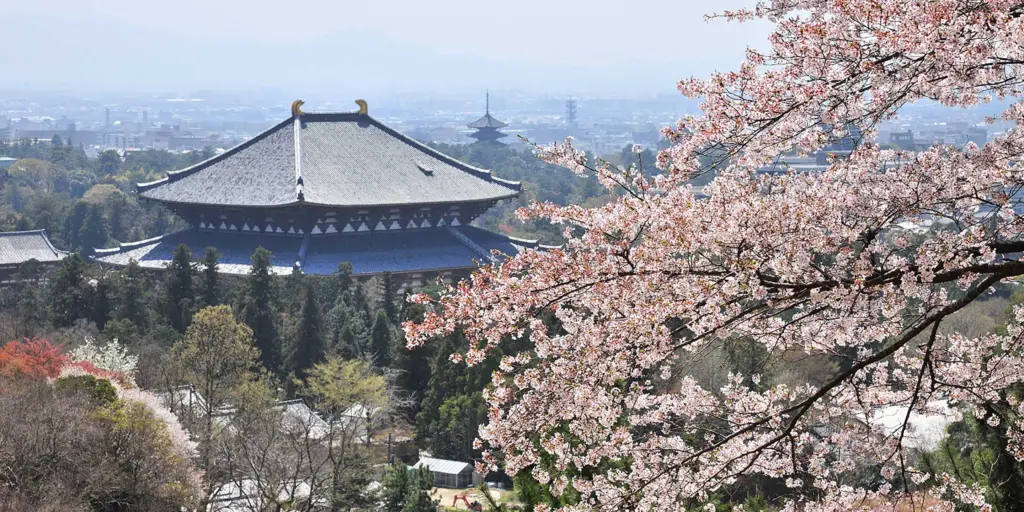
Nara, Japan’s ancient capital, is steeped in traditional culture and surrounded by natural beauty. Designated as a UNESCO World Heritage Site, the “ Historic Monuments of Ancient Nara ” comprise temples, ruins, along with the serene Kasugayama Primeval Forest.
But what truly sets Nara apart is its friendly population of wild deer that roam freely throughout the city. According to Shinto belief, these deer are considered sacred messengers of the gods.
Visitors flock to Nara Park to interact with these gentle creatures, who are known to bow politely in exchange for special “shika senbei” crackers. Additionally, Nara is home to Japan’s fastest mochi pounders at Nakatanidou, where visitors can witness this traditional craft in action.

Osaka, the bustling heart of the Kansai region, is renowned for its vibrant character and rich culinary heritage. As one of Japan’s largest cities, Osaka’s distinct dialect and mouthwatering cuisine have captured the hearts of visitors nationwide.
This lively city offers entertainment for all ages, boasting attractions such as one of the world’s largest public aquariums and the renowned Universal Studios Japan. A trip to Osaka wouldn’t be complete without immersing oneself in the electric atmosphere of Dotonbori, where iconic neon signboards illuminate the streets lined with countless restaurants and amusement facilities.
Despite its modern allure, Osaka also preserves its cultural heritage with pride. Visitors can explore historic landmarks like Osaka Castle and Sumiyoshi Taisha Shrine or experience traditional Japanese art forms such as Bunraku puppet shows.
In Osaka, the blend of modernity and tradition creates an irresistible urban tapestry, inviting travelers to immerse themselves in its dynamic energy and cultural richness.
An Overview of the Efficient Transportation in Japan
If you plan to explore Japan efficiently, understanding the transportation system is essential. Japan offers a well-developed public transportation network consisting of buses, railways, the famous Shinkansen bullet trains, and taxis.
Public transportation in Japan is known for its punctuality and reliability. Buses are a convenient way to navigate within cities and reach destinations not easily accessible by train. The railway system is extensive, connecting even the most remote areas of the country. The Shinkansen, Japan’s high-speed bullet train, is a popular choice for long-distance travel, offering speed and comfort.
Taxis are readily available in urban areas and can be a convenient option for reaching specific locations quickly. While taxis can be more expensive compared to other modes of transportation, they provide a comfortable and door-to-door service.
Factors that Make Japan’s Public Transportation Outstanding
- Efficiency and Punctuality : Japan’s transportation system, particularly its trains, is renowned for its punctuality and efficiency. Trains in Japan often run with remarkable precision, adhering to tight schedules with minimal delays.
- High – Speed Rail Network : Japan boasts one of the most advanced high-speed rail networks globally, exemplified by the Shinkansen (bullet train). These trains operate at speeds of up to 320 km/h (200 mph) and connect major cities across the country swiftly and comfortably.
- Integrated Public Transportation : Japan’s public transportation system is highly integrated, offering seamless transfers between various modes of transport, including trains, subways, buses, and even ferries.
- Safety and Cleanliness : Japan’s transportation infrastructure is known for its exceptional safety standards and cleanliness . Stations, trains, buses, and other modes of transport are meticulously maintained, and safety protocols are strictly enforced, contributing to a comfortable and secure travel experience for passengers.
- Cultural Considerations : Quiet cars on trains, designated seating areas for elderly and disabled passengers, and orderly queuing systems are just a few examples of how Japanese transportation accommodates cultural norms and expectations.
Rail Transportation
Japan’s extensive rail network includes the famous (Bullet Train) and a web of efficient local trains and commuter lines.
It is known for its punctuality, speed, and widespread coverage, making it a popular choice for both locals and tourists.
Introduction to Japan’s Rail Network
Japan’s rail network offers an efficient and extensive transportation system that’s renowned for its punctuality and convenience. When traveling in Japan, consider purchasing a rail pass for unlimited travel within a certain region, such as the Kansai area, which includes popular destinations like Osaka, Kyoto, and Nagoya.
The rail pass allows for flexibility and cost savings, making it an excellent choice for visitors exploring multiple cities. In Kansai, you can seamlessly hop on and off trains to visit historical temples in Kyoto, experience the vibrant urban life of Osaka, or explore the cultural offerings in Nagoya.
With frequent departures and well-connected routes, Japan’s rail network ensures a smooth and enjoyable travel experience throughout your journey.
Shinkansen (Bullet Train)

One standout feature of Japan’s rail network that you must experience is the Shinkansen, also known as the Bullet Train. The Shinkansen is a high-speed train that offers unparalleled efficiency and comfort for travelers.
With the convenience of the Japan Rail Pass , you can easily hop on the Shinkansen and zip from Tokyo to Kyoto in just a few hours. The Shinkansen’s punctuality and speed make it a popular choice for both locals and tourists looking to travel between major cities quickly and comfortably.
Local Trains and Commuter Lines
Efficiently connecting various neighborhoods and suburbs, local trains and commuter lines in Japan form a crucial part of the country’s extensive rail network. When using these railway services, keep in mind the following:
- Convenience : Local trains and commuter lines offer frequent services, making it easy to navigate through different areas.
- Access to Train Stations : Train stations are strategically located, providing easy access to popular destinations and key areas.
- Integration with Transportation Network : These services are integrated with other modes of transportation, allowing for smooth transfers and efficient travel.
Bus Transportation
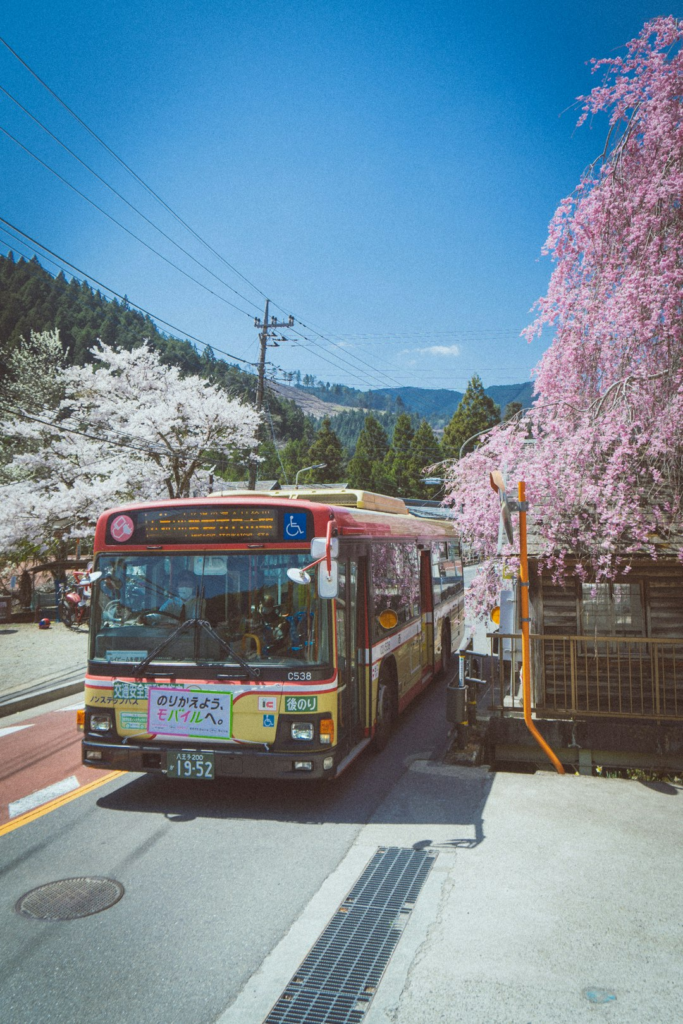
The bus system offers you a convenient and cost-effective way to travel around various cities and regions. Japan’s public transportation system includes extensive bus routes that cover both urban and rural areas, making reaching your desired destinations easy. Local buses are a common sight and provide a reliable means of getting around.
Purchasing a bus pass can be a smart choice if you plan to use buses frequently during your stay. These passes often offer unlimited rides within a specified period, saving you money compared to purchasing individual tickets for each journey. Additionally, bus passes can provide added convenience as they eliminate the need to carry exact change for fares.
Subway and Metro Systems
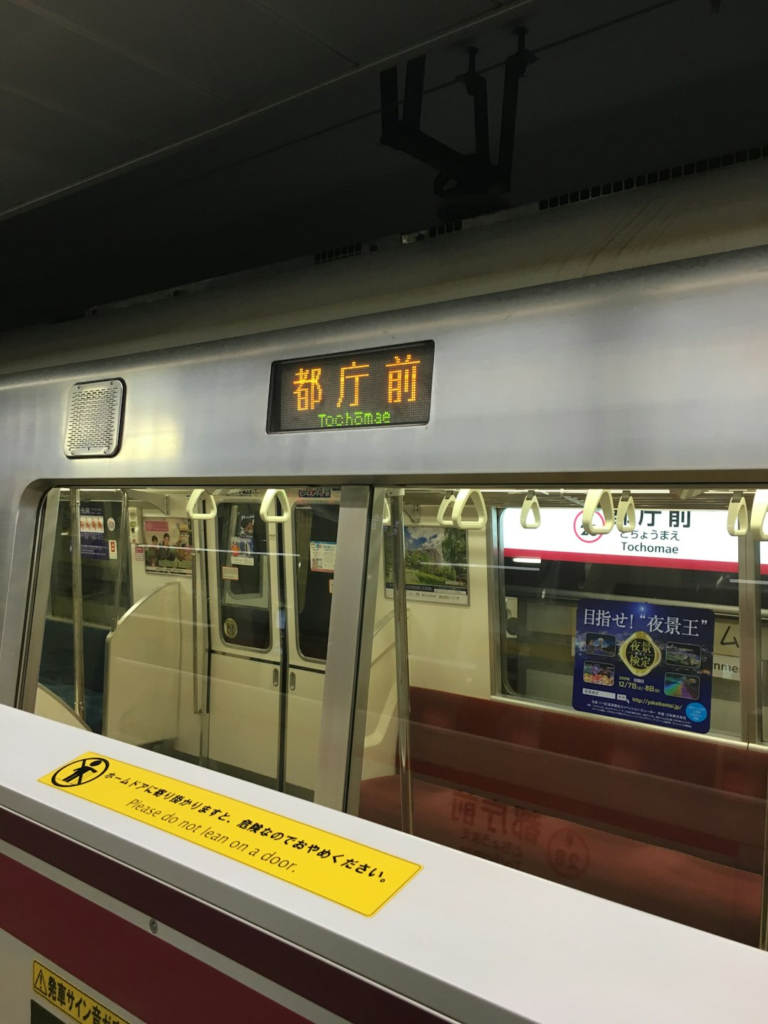
In a moment, you’ll learn about the Subway and Metro Services available in regional cities, as well as the different fare systems and ticketing options.
Understanding these key points will help you make the most of your travels around the country.
Subway and Metro Services in Regional Cities
Navigating regional cities in Japan becomes a breeze with their extensive and efficient subway and metro systems. These services are designed to make your travel experience seamless and convenient.
Here’s what you can expect:
- Coverage : The subway and metro systems in regional cities provide extensive coverage, connecting key areas and attractions within the city.
- Frequency : Trains run frequently, ensuring minimal wait times and allowing you to reach your destination promptly.
- Accessibility : Stations are equipped with amenities like elevators and ramps, making them accessible to all passengers, including those with mobility challenges.
Fare Systems and Ticketing
Japan’s transportation system is efficient, but navigating the fare systems can be confusing for visitors. To make your journey easier, familiarize yourself with the ticketing process.
When entering the subway or metro station, look for ticket machines or fare gates. Purchase a ticket based on your destination; fares are calculated by distance. Make sure to keep your ticket until you reach your final stop, as you’ll need it to exit the station.
If you’re unsure about which ticket to buy, don’t hesitate to ask the station staff for assistance.
Taxi Services
Understanding the types of taxis available, the various fare structures, and how to pay for your ride is crucial for a smooth travel experience in Japan.
Knowing the tips and etiquette associated with hiring a taxi in Japan can also help you navigate the taxi system effectively.
Types of Taxis
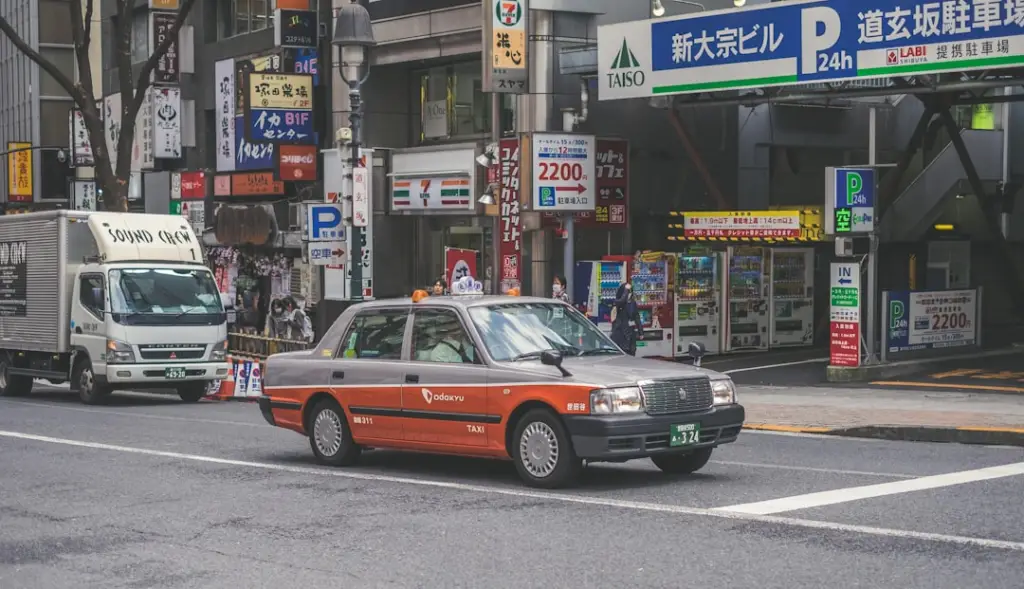
Travelers can easily hail a cab from various companies in major cities. When looking for a taxi in Japan, keep in mind the following types you might encounter:
- Standard Taxis : These are the most common type of taxis in Japan, easily recognizable by their sleek design and impeccable service.
- Luxury Taxis : For a more upscale experience, opt for luxury taxis that offer extra comfort and amenities for a higher fare.
- Van Taxis : Ideal for larger groups or travelers with more luggage, van taxis provide ample space and are readily available at major transportation hubs.
Taxi Fares and Payment Methods
Taxi fares in Japan are typically calculated based on distance traveled and time spent in the taxi.
Payment methods vary, but most taxis accept cash, credit cards, and IC cards for your convenience. It’s advisable to carry some cash when taking a taxi, as not all taxis may accept cards. Credit card payments are becoming more common, especially in urban areas.
Additionally, IC cards like Suica or Pasmo can be used for payment in some taxis, offering a quick and hassle-free way to pay for your ride.
Hiring a Taxi: Tips and Etiquette
For a smooth and courteous taxi experience in Japan, understanding the tips and etiquette for hiring a taxi is crucial. When hiring a taxi in Japan, remember these key tips and etiquette guidelines:
- Hand Gestures : Extend your arm outward, palm facing down, to hail a taxi. Avoid whistling or calling out to them.
- Seating : In Japan, it’s customary for passengers to sit in the back seat. The front seat is usually reserved for chauffeur-driven cars or when traveling with a large group.
- Payment : Always pay the fare displayed on the meter. Tipping isn’t customary in Japan, and it may even be considered rude.
Bicycle and Pedestrian Infrastructure
The well-developed infrastructure designed to accommodate pedestrians and cyclists makes traveling around Japan’s cities on foot or by bike easier.
In Japan, you’ll find a network of bicycle lanes, walking paths, and pedestrian-friendly streets that make urban cycling and walking a pleasant experience. The cities are thoughtfully planned with designated lanes for cyclists, separate from pedestrian walkways, ensuring safety and convenience for all travelers.
Pedestrian-friendly zones are common in Japan, with many areas closed off to vehicles, creating shared spaces where pedestrians and cyclists can move freely without worrying about traffic. These shared spaces are designed to promote a sense of community and encourage sustainable modes of transportation.
When flying within Japan, you’ll find a robust network of airports and airlines ready to serve you.
Here are some key points to consider for your air travel adventures:
- Airports : Japan boasts numerous airports, including major hubs like Narita International Airport in Tokyo and Kansai International Airport in Osaka, ensuring convenient access to various regions.
- Domestic Flights : Opting for domestic flights is a time-efficient way to explore the different prefectures and islands of Japan, with airlines offering frequent and punctual services.
- International Flights : If you plan to travel beyond Japan, major international airports like Haneda in Tokyo cater to a wide range of global destinations, connecting you seamlessly to other countries.
Remember these travel tips to avoid unpleasant issues arising:
- book your flights in advance to secure the best deals,
- arrive at the airport early to allow for smooth check-in procedures,
- familiarize yourself with your chosen airline’s baggage regulations.
Ferries and Water Transportation
Ferries provide a convenient and scenic way to travel, especially for island hopping adventures or reaching coastal cities that aren’t easily accessible by land.
In Japan, you can find a variety of ferry services operating in different regions, offering a unique perspective of the country’s stunning coastlines and landscapes.

One popular ferry destination is Tokyo Bay, where you can enjoy breathtaking views of the city skyline while cruising across the water. Tokyo Bay serves as a hub for water transportation, connecting various parts of the city and providing an alternative mode of travel for both locals and tourists.
Additionally, ferries are commonly used for island hopping excursions, allowing you to explore Japan’s diverse range of islands and experience the rich culture and natural beauty each island has to offer.
Car Rental and Driving
Consider renting a car to explore Japan’s diverse landscapes and charming countryside at your own pace. Driving in Japan can be a convenient way to access remote areas not easily reachable by public transportation.
Here are some tips to make your road trip experience enjoyable:
- Car Rental : Rental companies offer a wide range of vehicles, from compact cars to spacious vans, catering to your specific needs and budget.
- Driving: Remember to drive on the left side of the road in Japan. Roads are generally well-maintained, making it a pleasant driving experience.
- Traffic Laws and International Driver’s License : Familiarize yourself with Japanese traffic laws to ensure a safe journey. Additionally, it’s advisable to obtain an International Driver’s License before arriving in Japan to drive in the country legally.
A road trip in Japan allows you the flexibility to discover hidden gems off the beaten path. You can enjoy the scenic routes and immerse yourself in the beauty of Japan’s countryside while creating unforgettable memories.
Japan’s transportation system is highly efficient and comprehensive, making it straightforward for travelers to explore the country. The rail system, including the punctual Shinkansen bullet trains, covers major cities and towns, ensuring fast and reliable travel. Buses complement this network, reaching areas less accessible by train.
For urban travel, subways and metros provide a quick means to navigate major cities, while taxis offer convenient point-to-point service. For those looking to explore at their own pace, renting a bicycle or car can provide flexibility and access to off-the-beaten-path locations. Additionally, air travel connects Japan’s islands and remote regions efficiently, and ferries offer unique travel experiences along coastal areas.
Overall, the array of transportation options in Japan ensures visitors can easily find a mode that fits their preferences and travel plans, making their experience in exploring the country hassle-free and enjoyable.
- Recent Posts
- The Ultimate Guide to Driving in Japan for Foreigners and Tourists - June 14, 2024
- What Is Obon Festival and Why This Celebration of Japanese Tradition and Culture Is So Important? - June 14, 2024
- What To Do in Biei — A Traveller’s Guide - June 13, 2024
Was this helpful?
Related Posts:

Leave a Comment Cancel Reply
You must be logged in to post a comment.
Terms and Conditions - Privacy Policy
- About Premium Plan
[Access] Studio Tour Tokyo How to get to the new Harry Potter facility
Japan | Area Guide
![japanese tourist transport [Access] Studio Tour Tokyo How to get to the new Harry Potter facility](https://article-image.travel.navitime.jp/img/NTJauto0008-en/NTJiku1032_0.jpg)
10 popular hotels in Kamakura area with ocean view and sauna
Kanagawa | Accommodations

16 Really Delicious Motsu-nabe Restaurants in Hakata, Fukuoka! Introducing famous and popular restaurants.
Fukuoka | Area Guide

18 Best Food Options in Harajuku
Tokyo | Food & Drink
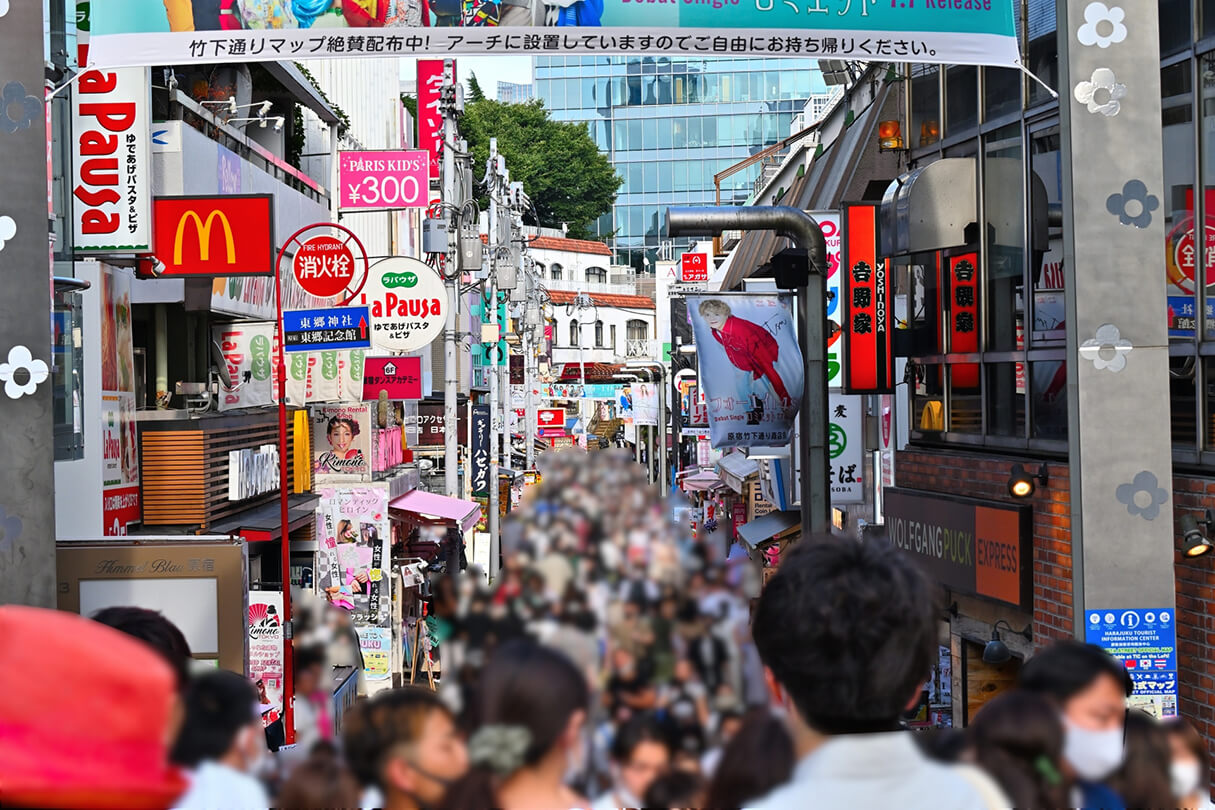
15 must-visit food spots in Asakusa
Tokyo | Traveling

- EDITOR'S CHOICE -

Japan | Travel Tips
Travel in Japan with NAVITIME eSIM
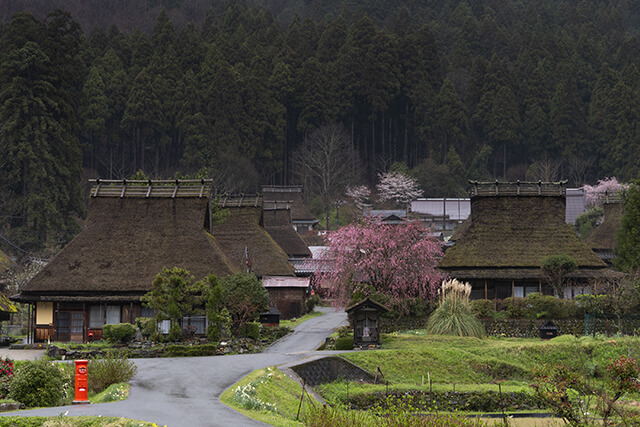
Japan | Ryokan Inns
Where to stay in Miyama, Kyoto’s thatched-roof farmhouse village
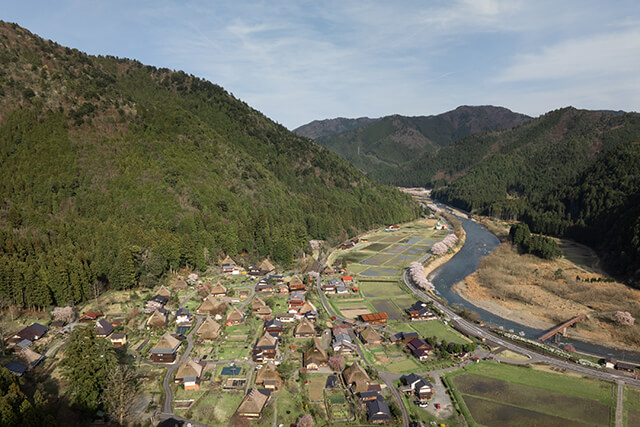
Japan | Traveling
Planning your trip to Miyama, Kyoto’s picturesque thatched-roof village

Kyoto | Traditional Culture
Discover Traditional Indigo Dyeing in Miyama

Kyoto | Traveling
Visiting Kayabuki-no-Sato, Kyoto’s picturesque thatched-roof village

FOOD & DRINK
ART & CULTURE

Go temple hopping through Kyoto’s world heritage sites
A walking plan—the culture and cuisine from Marunouchi to Ginza
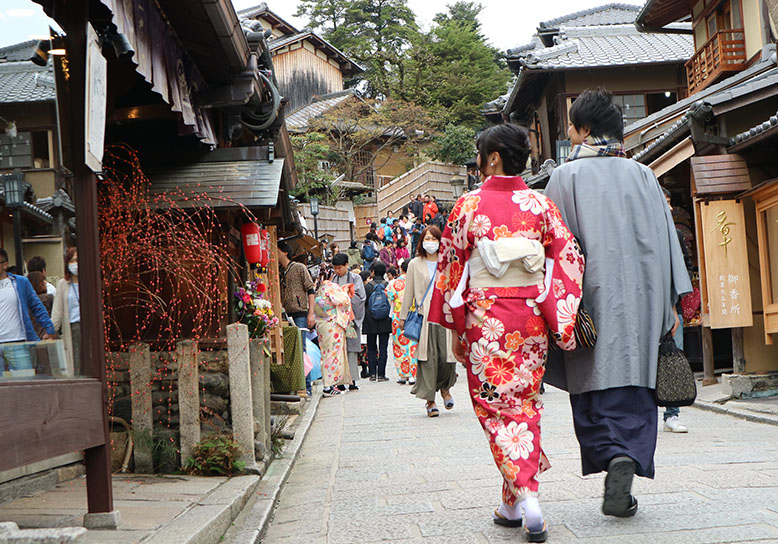
Kyoto walk—Climb “the hill” to Kiyomizu-dera Temple

Taste and see the tourist hotspots of Osaka
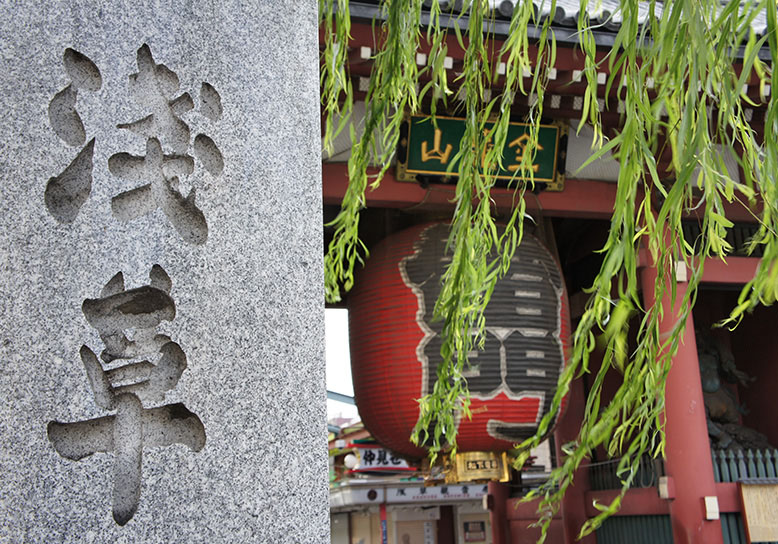
A day plan—Tokyo’s downtown culture in Asakusa, Ueno and Jimbocho
- Airline Ticket
- Tourist Pass
- International
- [Tokyo] Haneda / Narita
- Tokyo Haneda International Airport
- Tokyo Narita International Airport
- [Osaka] Itami / Kansai
- Osaka Airport
- Osaka Kansai International Airport
- Sapporo New Chitose Airport
- [Nagoya] Central / Komaki
- Nagoya Chubu Centrair International Airport
- Fukuoka / Kitakyushu
- Fukuoka Airport
- Okinawa Naha Airport
- -------- Hokkaido --------
- Okadama Airport
- Rishiri Airport
- Wakkanai / Rishiri
- Wakkanai Airport
- Ohotsukumonbetsu Airport
- Memanbetsu / Nakashibetsu / Kushiro
- Memanbetsu Airport
- Asahikawa Airport
- Nemuronakashibetsu Airport
- Kushiro Airport
- Kushiro / Obihiro
- Obihiro Airport
- Hakodate Airport
- Okushiri Airport
- --------- Tohoku ---------
- Aomori / Misawa
- Aomori Airport
- Misawa Airport
- Odatenoshiro Airport
- Akita / Odate-Noshiro
- Akita Airport
- Hanamaki Airport
- Syonai / Yamagata
- Shonai Airport
- Yamagata Airport
- Sendai / Fukushima
- Sendai Airport
- Fukushima Airport
- -- Kanto / Koshinetsu / Hokuriku --
- Narita / Ibaraki
- Ibaraki Airport
- Oshima Airport
- Miyakejima Airport
- Hachijojima Airport
- Niigata Airport
- Matsumoto Airport
- Toyama Airport
- [Hokuriku] Komatsu / Toyama / Noto
- Komatsu Airport
- Noto Airport
- ---- Chubu / Kinki ----
- Nagoya Airport
- Shizuoka Airport
- [Osaka] Itami / Kobe
- Kobe Airport
- Nankishirahama Airport
- Tajima Airport
- ---- Chugoku / Shikoku ----
- Okayama Airport
- Hiroshima / Iwakuni
- Hiroshima Airport
- Iwakuni Airport
- Yamaguchi-Ube / Kitakyushu
- YanaguchiUbe Airport
- Tottori Airport
- [Tottori] Yonago / [Shimane] Izumo
- Yonago Airport
- Iwami Airport
- Izumo Airport
- Oki Airport
- Tokushima Airport
- Takamatsu / Tokushima
- Takamatsu Airport
- Matsuyama Airport
- Kochi Airport
- --------- Kyushu ---------
- Kitakyushu Airport
- Oita Airport
- Saga Airport
- Nagasaki / Saga
- Nagasaki Airport
- Iki Airport
- Tsushima Airport
- Gotofukue Airport
- Kumamoto Airport
- Amakusa Airport
- Miyazaki Airport
- Kagoshima Airport
- Tanegashima Airport
- Yakushima Airport
- Kikaijima Airport
- Amamioshima Airport
- Tokunoshima Airport
- Okinoerabu Airport
- Yoron Airport
- --------- Okinawa ---------
- Kitadaito Airport
- Minamidaito Airport
- Kumejima Airport
- Miyako / Shimojishima
- Miyako Airport
- Tarama Airport
- New Ishigaki Airport
- Yonaguni Airport
- Aguni Airport
- Shimojishima Airport
- ---- collectively check ----
- Economy class
- Premium Economy class
- Business class
- First class
- Hokkaido / Tohoku
- Koshinetsu / Hokuriku
- Kyushu / Okinawa
- All Categories
- Transportation/Travel Service
- Gourmet Restaurant
- Marine Sports/Leisure
- River/Lake Activities
- Sight Seeing Tours/Guide Tours
- Cultural Activities
- One-day Hot Spring Trip
- Mountain/Nature Activities
- Sports/Fitness
- Entertainment/Amusement
- Snow Activities
- Sky Activities
- The Latest Activities
- Professional Activities
- Vegetable/Fruit Hunting
- Online Experience
- Other Activities/Experiences

AUTUMN FOLIAGE FORECAST

Top 42 Autumn Color Spot in Kyoto
Kyoto | Spiritual Spots

Fruit Picking Experiences Across Japan
Japan | Guide
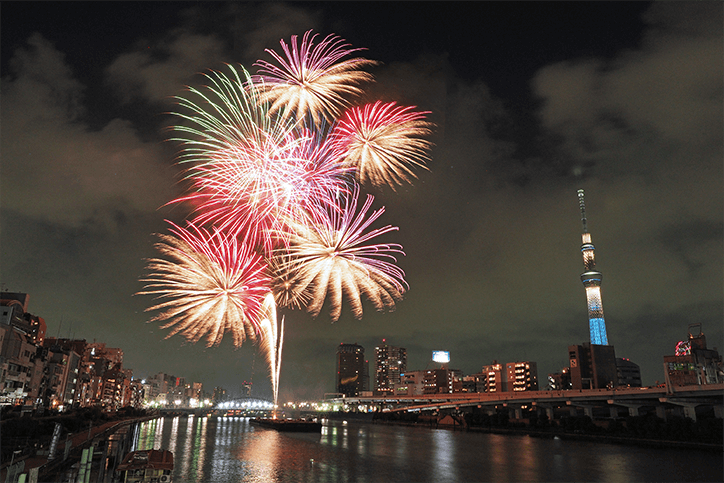
Japan gets lit as fireworks festivals return with a bang

How to Enjoy Fireworks Festivals in Japan
Yamanashi | Festivals
- OTHER SEASONS -

CHERRY BLOSSOM SEASON

FIREWORKS FESTIVALS

SKIING AND SNOWBOARDING
ABOUT JAPAN
TRANSPORTATION

Japan | Food & Drink
The 12 Must-Visit Restaurants in Shibuya That Won’t Break the Bank
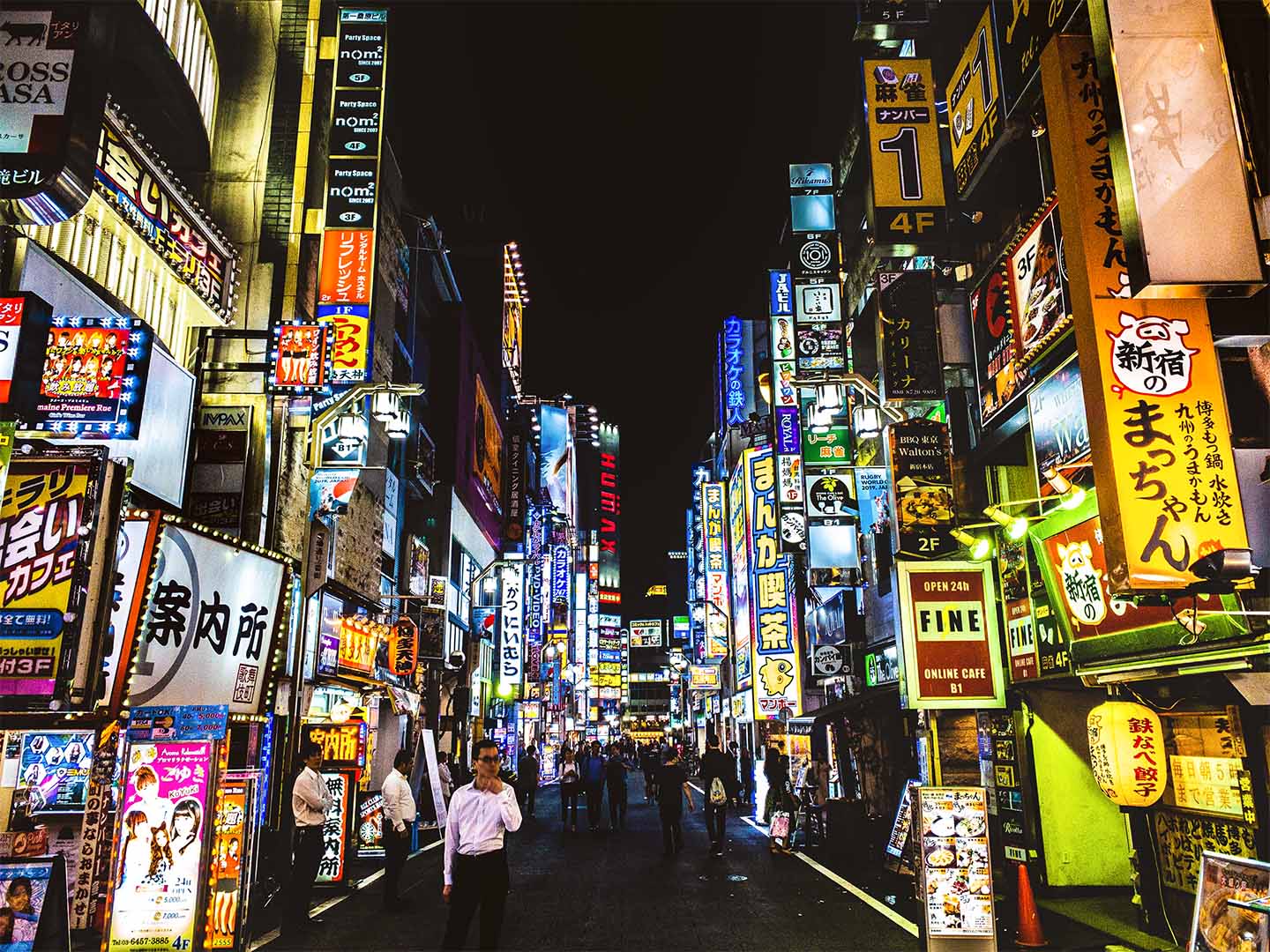
Tokyo | Need to Know
Public Safety in Japan: Tokyo Red-light Districts

Suica and Pasmo:How to Refund IC Cards
- LATEST ARTICLES -

Japanese Culture Experience at Koishikawa Korakuen Gardens and Baseball Experience at Tokyo Dome

Kyoto | Shrines
Exploring Kyoto: A Journey Through Tradition, Culture, and Nature

Japan | Hot Springs
Arima Onsen: A hot spring resort with a rich history

Kinosaki Onsen: Enjoy a tour of the hot springs in the elegant hot spring resort area

Airport Transfer Special Discount Coupon
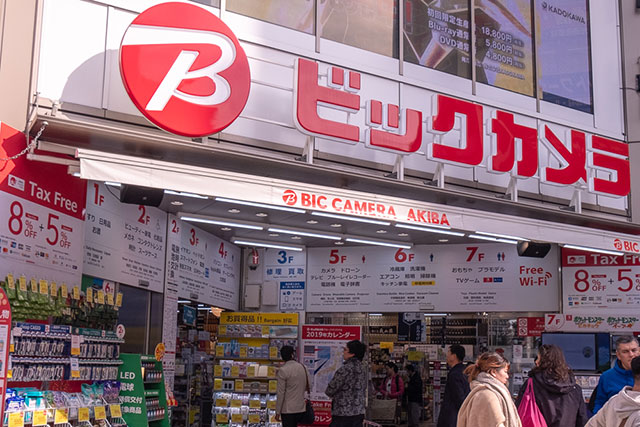
Tokyo | Coupon
BicCamera Discount Coupon

JINS Discount Coupon

Nippon Rent-A-Car Discount Coupon

You can download sightseeing magazines filled with the attractions of each of Japanese seasons - spring, summer, autumn, and winter. Browse through travel information about Tokyo, Hiroshima, Kamakura, etc., carefully selected by the editorial department of Japan Travel by NAVITIME.
View images filled with the charm of sightseeing spots throughout Japan such as Nara, Kamakura, and Morioka. Please enjoy images of Japan's unique scenery.
Login or Register
Reset password
Create account.
Please agree to the Privacy Policy and Terms and Conditions of Use before proceeding.

An Easy Guide to Japanese Public Transportation
Updated on: February 18, 2024
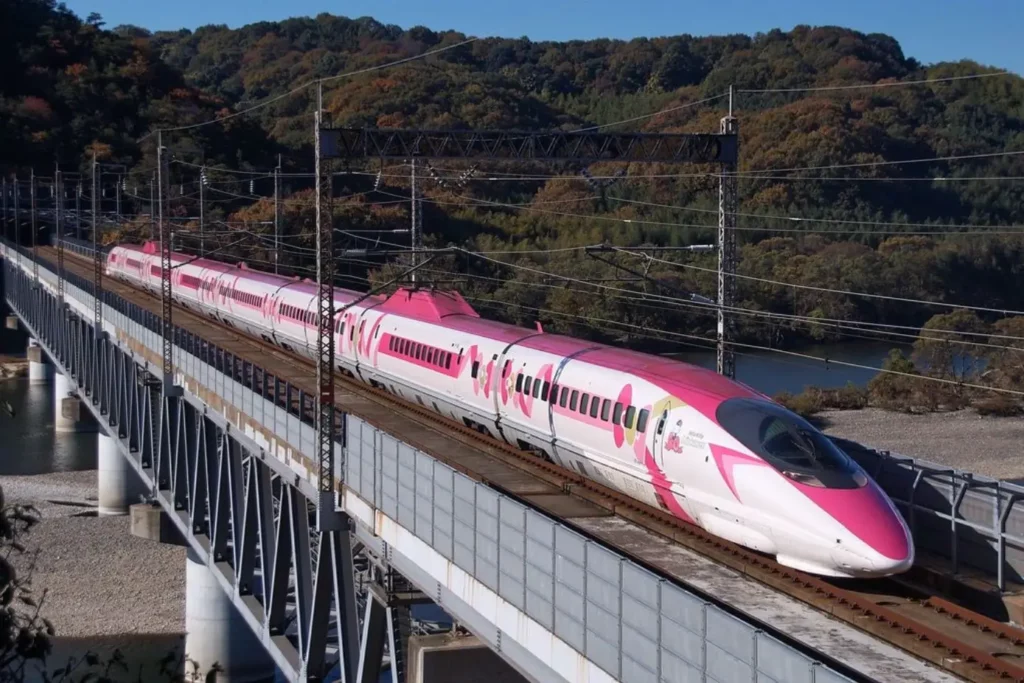
Navigating Japan’s public transportation system is an integral part of the travel experience in this culturally rich and technologically advanced country. Known for its efficiency, cleanliness, and punctuality, Japan ‘s transportation network is a marvel of modern infrastructure, making it incredibly easy and convenient for travelers to explore everything from bustling urban centers to serene rural landscapes. Whether you’re a first-time visitor aiming to hit all the major tourist spots or a seasoned traveler looking to explore Japan’s hidden gems , understanding the japanese public transportation system is key to a smooth and enjoyable journey.
Table of Contents
Japanese public transportation options.
- Understanding the Train System
Using Buses in Japan
The convenience of taxis, navigating by bicycle, understanding the japanese train system.
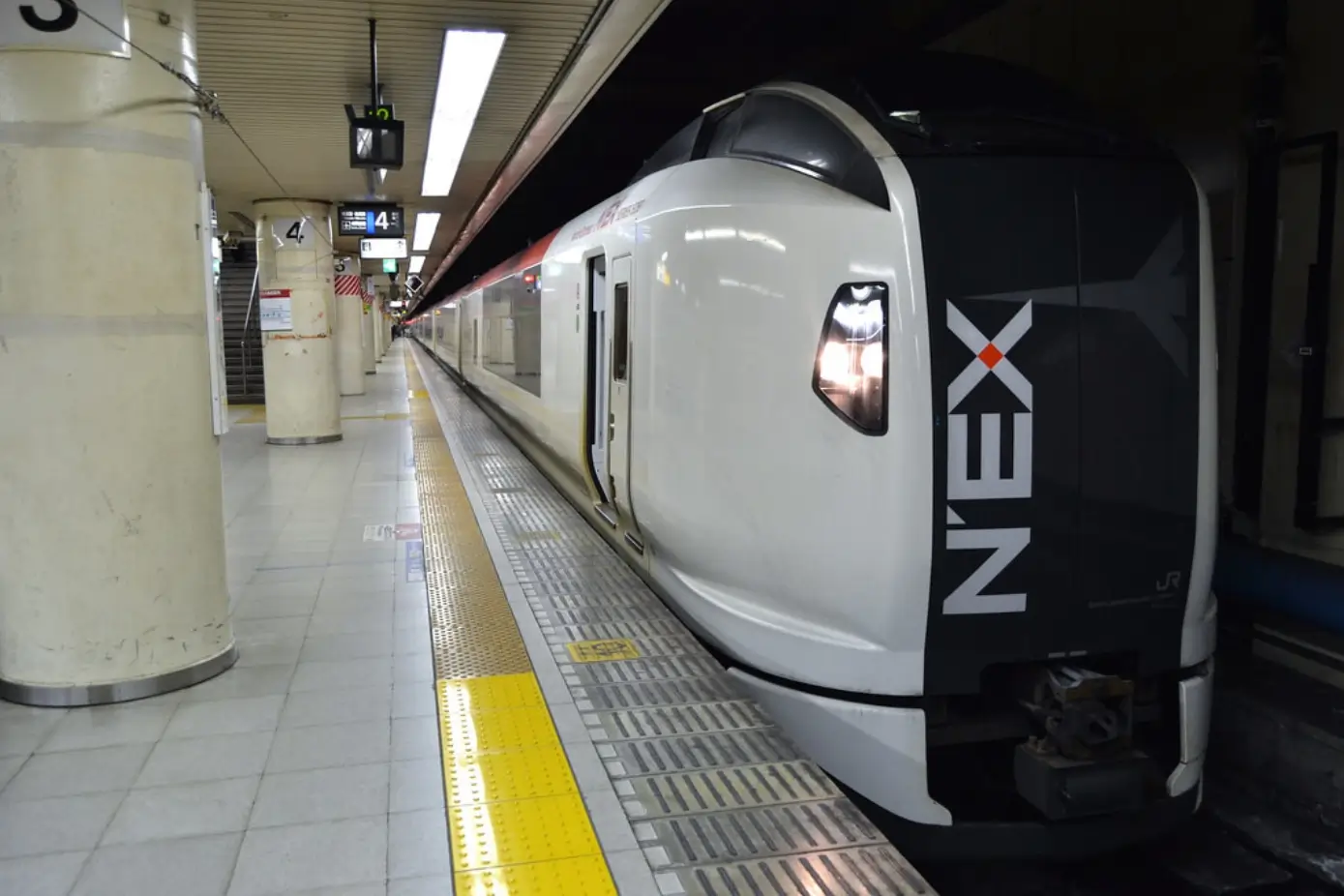
Japan’s train system is the lifeline of the country, known for its efficiency, punctuality, and extensive network. Understanding how it works can significantly enhance your travel experience in Japan.
Types of Trains
- Shinkansen (Bullet Trains) : High-speed trains connecting major cities. They are fast, efficient, and a quintessential Japanese experience.
- Local Trains : Operate within cities and suburban areas. Ideal for short distances.
- Express and Limited Express Trains : Faster than local trains, stopping at fewer stations and covering longer distances. Like the Narita Express taking you from Narita airport to Tokyo .
- Regional Trains : Connect smaller towns and rural areas, offering scenic views of the countryside.
Train Categories
- JR (Japan Railways) Group : The largest operator, covering most of Japan including the Shinkansen.
- Private Railways : Operate in and around metropolitan areas like Tokyo and Osaka, often connecting with tourist attractions.
Understanding Train Tickets
- Ticket Machines : Available in all stations, with multilingual options. Tickets are based on distance traveled.
- IC Cards : Prepaid rechargeable cards (like Suica and Pasmo) can be used for most trains, buses, and even in convenience stores.
- Reserved vs. Non-Reserved Seats : Shinkansen and some express trains offer reserved seating at an extra cost. Non-reserved seats are based on a first-come, first-served basis.
Navigating Stations and Platforms
- Station Signage : Signs in English indicate platforms, exits, and transfer information.
- Platform Information : Displays train destinations and departure times. Some trains split and go to different destinations, so checking the train number and destination is crucial.
Using Rail Passes
- Japan Rail Pass : Offers unlimited travel on most JR trains for tourists at a fixed price. It’s economical for long-distance travel and must be purchased before arriving in Japan.
- Regional Passes : Available for specific areas, like the JR East Pass or Kansai Area Pass, offering unlimited travel within the designated region.
Tips for Smooth Train Travel in Japan
- Peak Hours : Trains can be crowded during morning and evening rush hours, especially in big cities.
- Luggage on Trains : Space for large luggage is limited, especially on Shinkansen. Some trains have luggage storage areas at the ends of the cars.
Planning Your Train Travel
- Apps and Websites : Use Hyperdia or Google Maps for train schedules, routes, and fare calculations.
- Timeliness : Japanese trains are extremely punctual, so it’s advisable to arrive at the station a few minutes before the scheduled departure time.
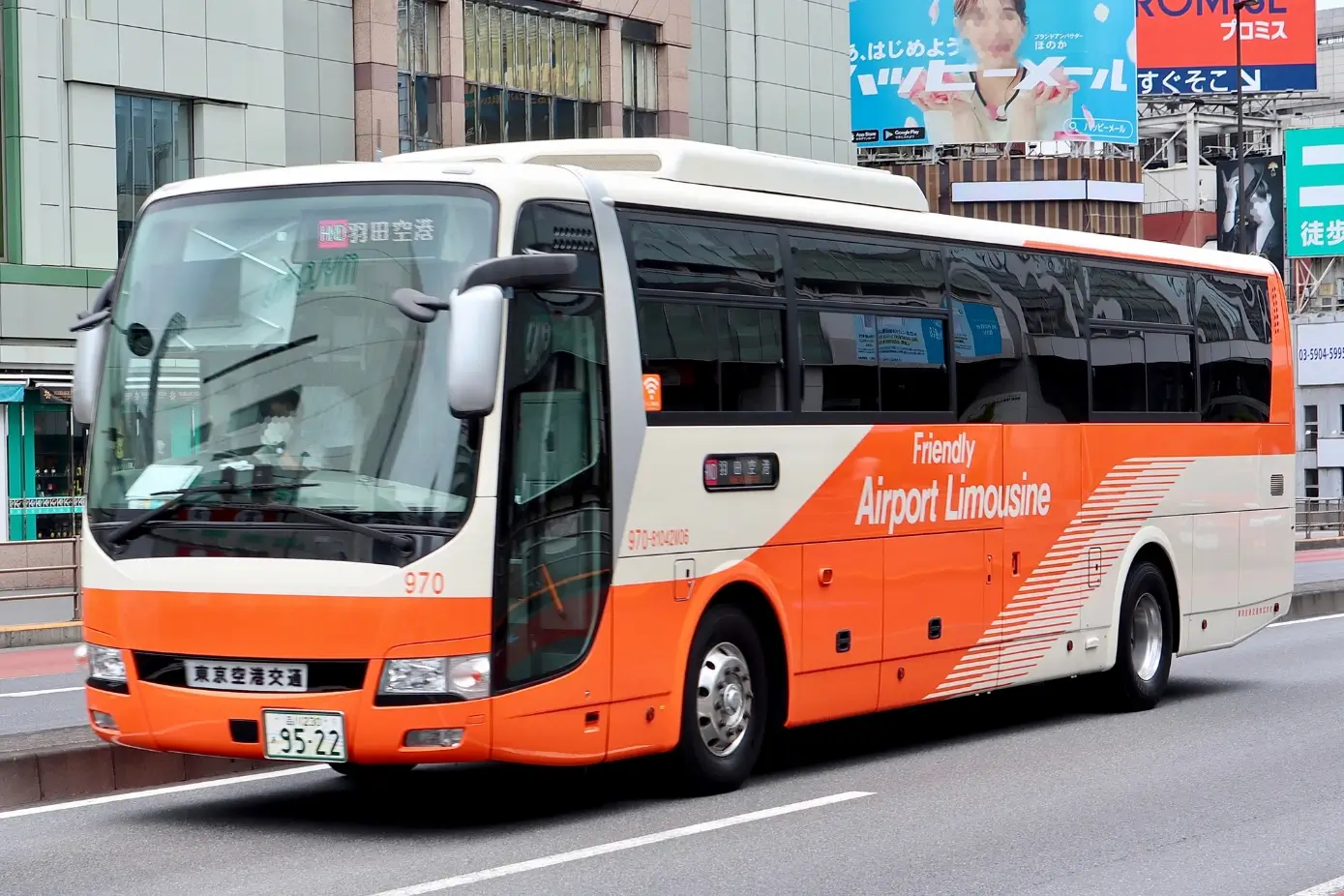
Buses in Japan complement the train system, providing access to areas that are off the beaten path or not serviced by trains. Whether it’s a short city trip or a longer journey across prefectures, buses offer a practical and often scenic way to explore the diverse landscapes of Japan, from the bustling streets of Shibuya to the serene countryside.
City Buses: Navigating Urban Areas
- Coverage : City buses cover areas that are beyond the reach of train networks, ideal for reaching specific destinations within cities.
- Routes and Stops : Buses operate on fixed routes with designated stops. Route maps and timetables are usually available at bus stops and online.
- Payment : Fares can be paid with cash or an IC card. If paying with cash, exact change is often necessary, as drivers usually don’t provide change.
Long-Distance Buses: An Alternative to Trains
- Cost-Effective : Long-distance or highway buses are a budget-friendly alternative to trains for traveling between cities.
- Comfort and Convenience : Many long-distance buses offer amenities like reclining seats, restrooms, and Wi-Fi, ensuring a comfortable journey.
- Reservations : For popular routes, it’s advisable to book your tickets in advance, either online or at bus terminals.
Tips for Bus Travel in Japan
- Bus Passes : In tourist-friendly cities, look for day passes that offer unlimited travel on local buses.
- Boarding and Alighting : In most cities, you board the bus from the rear door and exit through the front door. Pay the fare when alighting.
- Timeliness : Japanese buses are known for their punctuality. Arrive at the bus stop a few minutes before the scheduled departure time.
Using Buses for Sightseeing
- Tourist Buses : Some cities offer special sightseeing buses that cover major tourist attractions, often accompanied by multilingual audio guides.
- Hop-On Hop-Off Buses : Available in major tourist destinations, these buses allow flexible travel and are an easy way to see the top sights.
Accessibility
- Wheelchair Accessibility : Many city buses are equipped with facilities for wheelchair users, including ramps and designated seating.
Understanding Bus Etiquette
- Quietness : Conversations should be kept at a low volume, and phone calls are generally discouraged.
- Luggage : Keep your luggage in designated areas or on your lap to avoid obstructing the aisle.
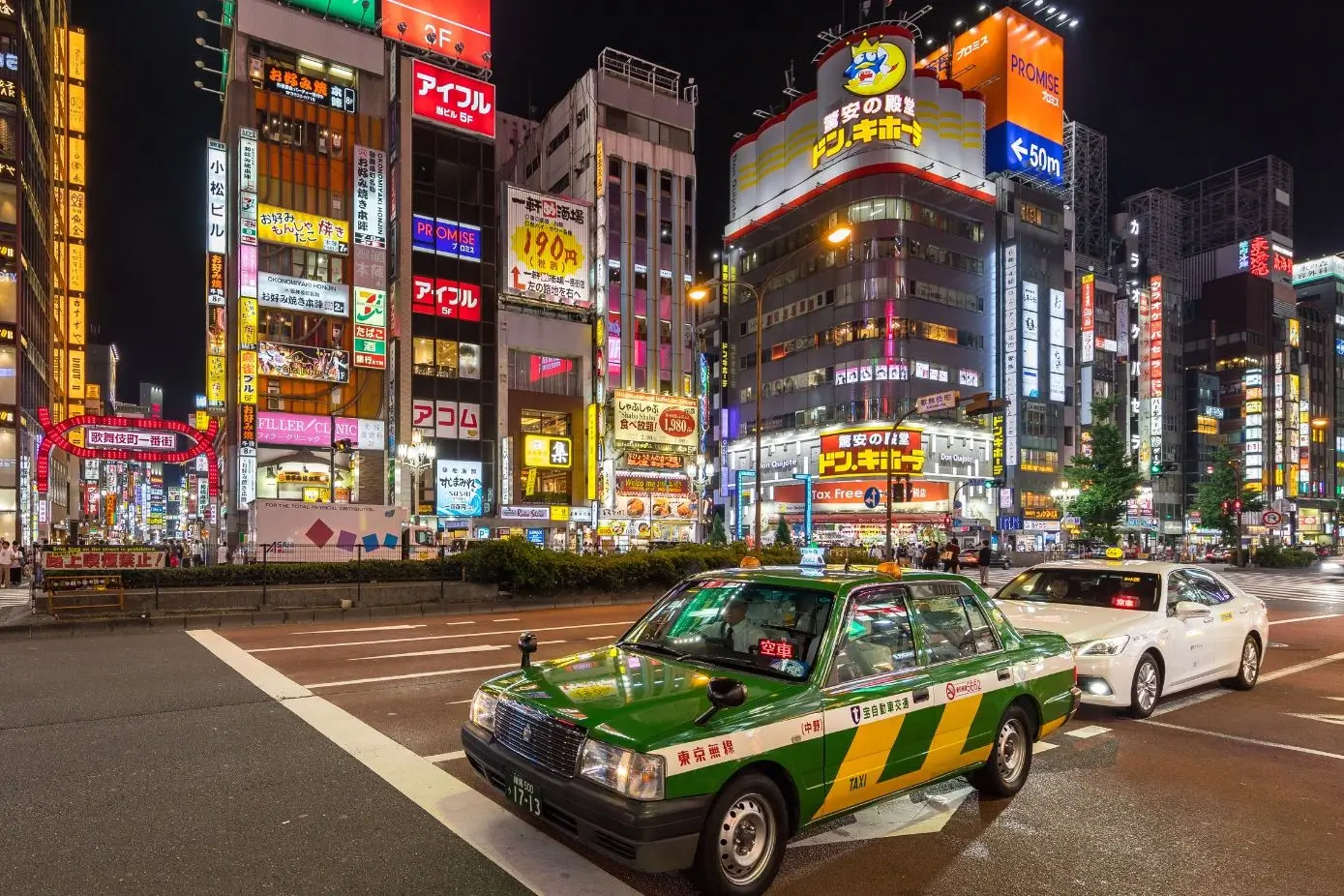
Taxis in Japan, with their reliability and availability, provide an excellent transportation option for travelers. They are particularly useful for direct travel to destinations, late-night rides, or when carrying heavy luggage. Whether you’re heading out for a day of exploring the best things to do in Ueno or catching an early flight from Narita , taxis offer a stress-free way to get to your destination comfortably and efficiently.
Availability and Ease of Use
- Ubiquitous Presence : Taxis in Japan are readily available, particularly in urban areas, near train stations, and popular tourist spots.
- Flagging Down a Taxi : You can hail a taxi on the street, find one at designated taxi stands, or have your hotel call one for you.
Understanding Taxi Fares
- Metered Fares : Taxis in Japan use a meter system. The fare starts with a fixed amount and increases with distance and time.
- Fare Display : Fares are clearly displayed on the meter. Extra charges may apply for late-night rides, tolls, or large luggage.
Features of Japanese Taxis
- Automatic Doors : Most taxis have automatic doors controlled by the driver, so there’s no need to open or close the door yourself.
- Cleanliness and Comfort : Taxis are known for their cleanliness, comfort, and the professionalism of the drivers.
Tips for Using Taxis in Japan
- Address in Japanese : It’s helpful to have your destination written in Japanese or show it on your phone, especially if the driver doesn’t speak English.
- Taxi Apps : Apps like JapanTaxi are useful for booking taxis and providing fare estimates.
- Receipts : Always ask for a receipt (ryōshūsho) in case you leave something behind or for expense tracking.
When to Use Taxis in Japan?
- Convenient for Groups : Splitting the fare among a group can make taxi rides more economical.
- Late-Night Transportation : Ideal when trains and buses have stopped running, ensuring safe travel back to your accommodation.
Language Barrier
- English Proficiency : While not all taxi drivers are fluent in English, they are generally accustomed to assisting foreign passengers. Here are some basic japanese phrases to help you for your next trip.
- Communication Tools : Having a translation app can be handy for communicating your destination or any specific instructions.
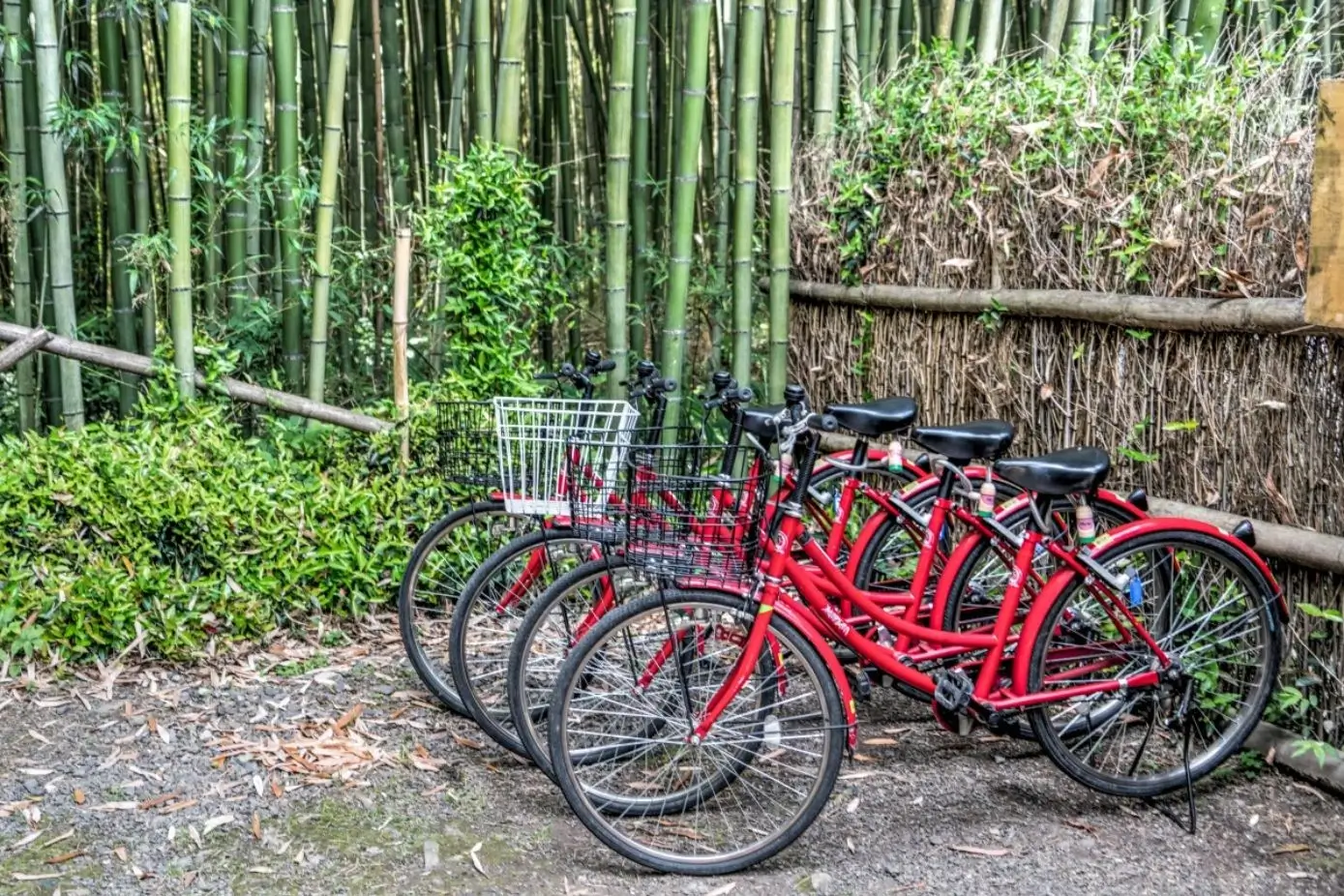
Exploring Japan by bicycle is not only an eco-friendly option but also a wonderful way to experience the country’s landscapes and cityscapes at a leisurely pace. Japan offers a cyclist-friendly environment with numerous bike rental options, making it easy and enjoyable to navigate both urban and rural areas on two wheels.
Bicycle Rentals and Tours
- Rental Shops : Most major cities and tourist destinations in Japan have bicycle rental shops. They are often conveniently located near train stations.
- Cycling Tours : Many cities, particularly those with significant tourist attractions like Kyoto and Tokyo, offer guided cycling tours – a great way to see the sights with local insight.
Cycling in Japanese Cities
- Bike Lanes : While not as prevalent as in some Western countries, many Japanese cities have designated cycling lanes. Otherwise, cyclists are expected to use the roads or designated paths.
- Parking : It’s important to use designated bicycle parking areas to avoid fines. Unauthorized parking, especially in crowded city areas, can lead to bicycles being impounded.
Rules and Safety
- Traffic Rules : Cyclists are subject to the same rules as motorists and should always adhere to traffic signals and signs.
- Helmets : Helmet use is not mandatory in Japan, but wearing one is advisable for safety, especially for tourists unfamiliar with the local traffic conditions.
Long-Distance Cycling
- Cycling Routes : Japan offers several long-distance cycling routes. The Shimanami Kaido, which connects Honshu to Shikoku over a series of islands, is particularly famous for its scenic beauty.
- Preparation : For longer rides, ensure your bicycle is in good condition, and you have the necessary gear, including a repair kit, water, and snacks.
Benefits of Cycling in Japan
- Scenic Explorations : Cycling allows you to explore areas that might be missed by car or public transport, from hidden alleyways in cities to rural backroads.
- Health and Environment : It’s a healthy, environmentally friendly way to travel, offering a more immersive experience of Japan’s diverse landscapes.
Practical Tips
- Cultural Courtesy : While cycling, be mindful of pedestrians and other cyclists, maintaining a polite and safe distance.
- Storage and Security : Always lock your bicycle when leaving it unattended, even in safe areas.
Final Thoughts
Navigating Japan’s varied and extensive transportation options is a journey in itself, one that adds to the richness and enjoyment of your travel experience in this fascinating country. Whether you’re rushing through the neon-lit streets of Tokyo or meandering through the scenic countryside around Kyoto , Japan’s transportation system will be an indispensable part of your adventure.
Major cities and tourist destinations have signage and information in English , making navigation relatively straightforward.
Use apps like Google Maps or Hyperdia for accurate and up-to-date transit information.
The Shinkansen (bullet train) is the fastest and most convenient way to travel between major cities like Tokyo , Kyoto , and Osaka . For budget travelers, highway buses are a cost-effective alternative, though they take longer.
Yes, Japan is continually improving accessibility in public transportation. Most train stations and many bus systems are equipped with facilities for travelers with disabilities, including elevators, escalators, and accessible restrooms.
Leave a Comment Cancel reply
Save my name, email, and website in this browser for the next time I comment.
Recent posts

The Ultimate Guide to the Philippines’ Secret Beaches

The 9 Best Things To Do in Romblon Island

The Top 5 Hidden Gem Islands of the Philippines

8 Best Things To Do In The Philippines in 2024
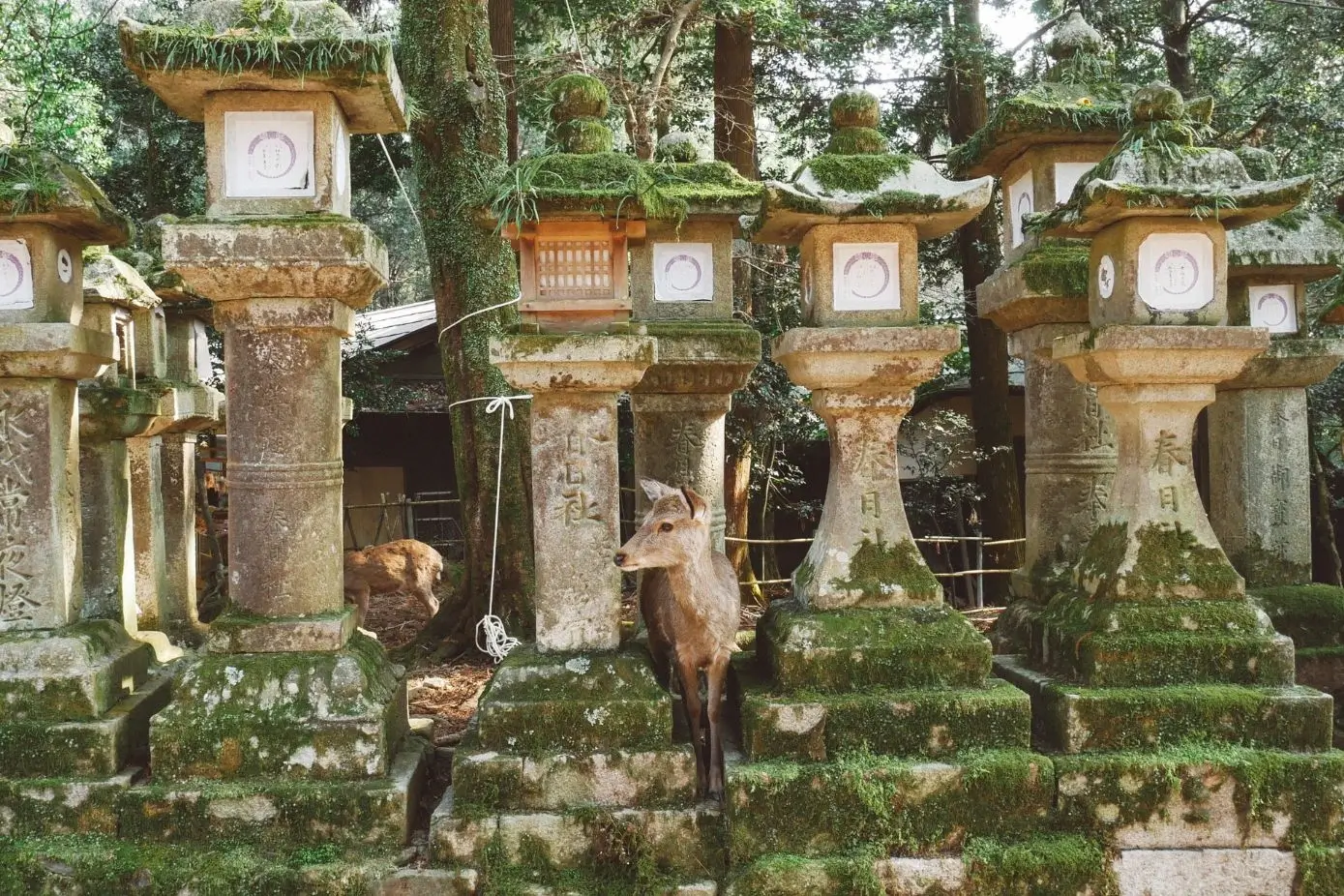
The Best Things to Do in Nara for an Awesome Day Trip

Follow my travels on social!
© Wander in Asia - 2024
Transportation in Japan: An Intro to Getting Around in Japan
Jamila Brown Updated on June 15, 2024 Travel in Japan
Public transportation in Japan is often lauded as being one of the best in the world. With its small size and extensive web of efficient transport systems, including the bullet trains (Shinkansen), Japan is undoubtedly one of the world’s easiest places to travel!
However, while relying solely on the incredible bullet trains is tempting, you’ll potentially miss out on traveling while enjoying the hidden treasures of scenic beauty lurking between Japan’s major transport hubs!
So, let’s take a deeper look at the various ways to travel around Japan and how to use various Japanese transportation systems, including intercity travel and urban transport networks.
In this article
Urban Transportation in Japan
All big Japanese cities have a very effective and efficient network of the following public transport systems:
- Underground or subway trains
- JR trains run by Japan Railways
1. Japanese Metro, Subways, and JR
The Japan Railway (JR) trains are the most common train lines you’ll use. There are also extensive subway systems in Japan’s larger cities. Unlike the subways, the JR trains run on the surface, and their network is not as extensive as the subway trains in big cities like Tokyo, Yokohama, Osaka, etc.
Note: If you plan to visit Japan, you can download the PDF files of subway maps for some of the cities here:
- Tokyo subway map
- Osaka subway map
- Kyoto subway map
- Fukuoka subway map
Japanese metropolitan areas are very connected by subways and other metro trains. While the word for a train in Japanese is “ Densha (電車),” meaning “electric vehicle,” the subways or underground trains are known as “ Chikatetsu (地下鉄)” or underground transport.
Meaning of Chikatetsu in Japanese
The word “ chikatetsu ” is comprised of three kanjis as follows:
- 地: Ji (chi), meaning earth.
- 下: Shita (Ka), meaning below or under.
- 鉄: Tetsu, meaning “Iron.”
So, literally, the word Chikatetsu translates into “ Underground Iron .” People may wonder why an underground train is not called “Chikadensha.” And well, you will not be wrong to wonder about it. However, the Japanese word chikatetsu means the network of underground train tracks, and not the underground track, as whether the train is running or not, the tracks always stay there .
However, the English word Metro is commonly used for the local subway trains in Japan.
Local trains, subways, or metros will likely be the first transportation you’ll use in Japan after landing at any airport in any metropolitan area, as the local trains are the most convenient and efficient Japanese transportation for traveling inside a city.
Local and Rapid Intercity Trains in Japan
There are several types of local trains to take that differ by how many stops they make. Local trains, “ futsu-densha (普通電車)” stops at every stop, and the rapid (kaisokuor 快速) skips some stations and is the same price as the local train. The express (kyuukoor 急行) also stops at fewer stations than the local.
The limited express (tokkyuu or 特急) only stops at major stations and costs a little more than the local, depending on the distance traveled. There is also an option to ride in the green car section of the train. These are first-class train cars with comfortable individual seating for passengers. They’re more expensive to ride on but a nice option for traveling a long distance.
Buying the Train Ticket
Depending on your commute, you’ll spend about JPY 5,00 to 1,000 a day. Train fare depends on the distance you travel and can change or remain the same depending on the city and how far you travel. To ride the train, you must purchase a train ticket (kippu or きっぷ) from the ticket machines near the ticket gates.
On the ticket screen, click the corresponding number to the destination you want to go to. Insert the money into the coin slot, and the ticket will come from one of the slots. Note that the machines don’t accept 5- or 1-yen coins. You can insert up to JPY 10,000 bills into the machine and return the corresponding change.
Using IC Cards instead of Train Tickets
Locals in Japan typically use an IC card when taking public trains. IC cards are rechargeable cards that can also be used for buses, convenience stores, vending machines, and even some restaurants.
Different regions of Japan have their own corresponding IC card. However, you can use them for transportation across Japan. You can purchase IC cards from the ticket booths at the station, which often require a deposit of 500 yen.
You can also type your name on the card and register your phone number in case it gets lost and can be returned to you. To use the card, recharge it at the ticket booth and scan it against the card reader at the ticket gate to board the train.
Once you reach your destination, scan the card again, and the appropriate train fare will be deducted from your pre-loaded amount. The subways (chikatetsu or 地下鉄) also work like the regular JR trains. You can use IC cards at the subway station, so don’t think you have to purchase another card.
Commuter Pass
Working professionals often purchase a commuter pass ( teikiken or 定期券) to consolidate their transportation costs between two destinations.
Since employers often pay their employees’ transportation costs, purchasing a commuter pass is often cheaper than paying directly for the cost of transportation. Commuter pass purchases are available for one month, three months, or six months.
When purchasing a commuter pass, print an official receipt ( ryoushuusho or 領収書). You hand over this receipt to your accounting department to receive your monthly transportation allowance with your next salary deposit.
2. Bullet Trains (Shinkansen)
Shinkansen (新幹線) is the Japanese word for bullet trains in Japan. There are special tracks built for the bullet trains to run on. The JR train company operates them. Bullet trains only stop at major train stations. These trains are some of the fastest in the world, traveling up to 320 km per hour, and are famous for their punctuality, comfort, safety, and efficiency.
Meaning and Origin of the Word Shinkansen
The word Shinkansen is comprised of the following 3 Kanji characters:
- 新 (Shin): New
- 幹 (Kan): Stem or Trun
- 線 (Sen): Line
Together, these three Kanjis form the word 新幹線 (Shinkansen), which in Japanese means “New Trunk Line.” The literal translation of this term may be a bit confusing, but what this term really represents is “New Main Line.” Just like Chikatetsu , this term represents the bullet train tracks more than the train itself.
Bullet Train Connectivity in Japan
Bullet trains (Shinkansen) connect all major cities of Japan with a very efficient network. There are 9 Shinkansen lines in Japan, and there are as follows:
- Tōkaidō Shinkansen
- Sanyo Shinkansen
- Tohoku Shinkansen
- Joetsu Shinkansen
- Kyushu Shinkansen
- Hokkaido Shinkansen
- Hokuriku Shinkansen
- Akita Shinkansen
- Yamagata Shinkansen
The following picture shows the cities of Japan connected by the bullet train network:
Tickets for Bullet Trains
You can purchase the tickets for the bullet train at JR ticket counters and designated ticket machines online. IC cards can be used to purchase tickets as well. You can use a credit card to purchase tickets at the JR ticket counters. However, you cannot use any credit cards issued outside of Japan at the ticket machines.
The fee for the bullet train includes the base fare, the Shinkansen supplement fee, seat reservation (optional), and the green car fee (optional). When purchasing a ticket, you’ll need the following information—number of travelers, departure date, departure station, arrival station, ordinary or green car, and reserved or non-reserved seat.
When you purchase the ticket for a bullet train, you’ll receive two tickets instead of one—a base fare ticket and a supplement fare ticket. Do not lose your tickets; you will likely have to repurchase another ticket. Many of the workers at the ticket office do not speak English, so it’s best to write the information on a piece of paper or use “Google Translate” to help ease the process.
Although it’s not always necessary, purchasing a reserved (shiteiseki or 指定席) seat ticket is highly recommended. You can purchase these tickets one month before the trip until shortly before departure time.
There are non-reserved ( jyuuseki or 自由席) seats available as well. Seat reservations offer peace of mind when traveling. During the peak travel seasons without a seat reservation, you’ll likely have to stand on a crowded train for a few hours.
3. Bus Transportation System in Japan
Buses ( basu or バス) are the second most popular form of transportation. They can be a little intimidating at first since many buses outside major cities don’t have English translations, but they’re easy to use once you get used to them.
There are two types of buses commonly seen around Japan: city buses and charter buses. City buses, of course, service the city area. They often cost less than 500 yen, and boarding areas can be found near station entrances.
Shuttle buses are often used to visit tourist areas or the airport. You can book the tickets online, in person at the bus station, or inside the bus. Instead of paying by distance, chartered buses have a pre-determined fare amount.
Riders usually board the bus at the back door (some older buses board at the front). At the door, grab a ticket with a number written on it. Many buses allow you to pay with an IC card as well.
Using an IC Card or Ticket on City Buses
If you’d like to pay by IC card , scan your card on the card reader before you get on the bus. A display at the front of the bus shows the next stop and the fares for each stop. To determine your fare, look at the amount associated with the number on your ticket. So, if your ticket is 0, pay the fare associated with the number zero when you leave the bus.
As the bus is approaching your stop, press one of the stop buttons marked by tomarimasu (とります) on the walls to signal the bus driver to stop. If you’re paying with cash at the front and don’t have exact change, don’t worry. You can use the machine at the front to get smaller coins.
4. Taxis in Japan
Taxis ( takushii or タクシー) are the third most common way to get around in Japan. Ride-share apps like Uber and Lyft aren’t in Japan, so don’t expect to find cheaper taxi alternatives while living here.
For the average person, taxis are expensive, unnecessary alternatives to public transportation. However, after midnight, the trains and buses stop running, and they’re often the only form of transportation available.
To hail a taxi, go to a taxi stand or flag down a taxi near an area where it’s safe to stop. You can find taxi stands outside all train stations and near the bus stops in Japan.
A plate on the dashboard will usually indicate if a taxi is vacant. You can look for the following signs:
- Kkuusha or 空車 for vacant
- C hinsou (賃走) for occupied
When boarding a taxi, enter the car through the left door. Please wait for the door to open on its own before entering the taxi. Taxis also accept payment using cash, credit cards, and rechargeable IC cards. Taxis can also be used as charter sightseeing services, with the driver doubling as a tour guide. Renting a sightseeing taxi typically costs ¥10,000 for two hours.
Taxi drivers in Japan are highly trusted and extremely respectful. You can recognize the licensed taxis by their green license plates instead of the white or yellow plates used by regular cars. Fare calculation is done by the meter, but there are exceptions on predetermined routes to the airport or other popular destinations where a flat rate is offered.
Type of Taxis and Fare
There are three types of taxis large ( oogatasha or 大型車), medium ( chuugatasha or 中型車), and small taxis ( kogatasha or 小型車).
Taxi fares in Japan are the second highest in the world and vary from place to place. For 4-passenger taxis, fares typically start around 400-810 yen for the first two kilometers.
The fare increases to about 80 yen for every additional 300 meters. The toll will be added to the fare if a taxi uses the expressway. You must pay a late-night surcharge for trips between 10:00 PM and 5:00 AM. Some taxis have started with a minimum fare of 1 km instead of 2 km.
5. Traveling by Car in Japan
While Japan’s trains are the envy of the world, some places cannot be discovered well without a car! This includes Spirited Away-Esque onsen towns, often tucked away alongside mountain highways and boasting fewer crowds than those connected by train. However, driving in Japan can be arduous and expensive, making it not for the faint of heart or those on a tight budget.
Renting a regular car will generally cost upwards of 5,000 yen per day at the absolute cheapest, with many companies charging far more. However, the biggest killer is Japan’s narrow roads, which are difficult to navigate if you are new to Japan and severely lack free parking space.
Unless you have accommodation with a designated parking space, you’ll likely have to bear the burden of heavily metered parking, even in the countryside! In addition, Japan’s nonsensical street system, often based on feudal paths, is full of sudden dead-ends, one-way streets, or absurdly tight corners, forcing even the most confident drivers to lose their cool.
While Japan’s ubiquitous highways are exceptionally well maintained and easy to navigate, the tolls are extraordinarily high! For example, the roughly 5-hour drive from Tokyo to Osaka will set you back approximately 10,000 yen, making it only a little cheaper than the shinkansen without the additional price of petrol (often also high) and rental fees.
6. Air Travel in Japan
Surprisingly, domestic airplane rides in Japan can be even cheaper than the bullet train – and much faster!
Japan’s capital and secondary cities are well supported by airports, with numerous flights crisscrossing the country. For example, a flight from Tokyo’s Haneda Airport and Sapporo’s New Chitose Airport can be as low as 15,000 yen during the off-season, while a bullet train ride would set you back at least 25,000 yen (both one-way).
Of course, with the ever-fluctuating prices of airplanes vs. the stable prices of trains, your experience may differ! Thankfully, catching a plane in Japan is just as easy as in any other country, albeit much more relaxed and efficient than most.
7. Water Transportation
Daytime or overnight boat rides allow one to travel while enjoying the sight of the waves of water and the breathtaking coastal landscapes during the day or the night sky during the night.
Hopping throughout Japan’s 6,852 islands across regions like the Setouchi Inland Sea, Okinawa, Kagoshima, or even Tokyo provides an off-beat way to uncover a new, lesser-seen side to Japan.
Huge ferries and cruise ships regularly run between Japan’s major ports for regular travel. These ferries and cruises are slower than the other modes of transport; however, they are often significantly cheaper than other forms of transport. The assumption for the latter statement is that you are not going for the most luxurious private room!
Japanese Transportation Prepaid Rechargeable IC Cards
We have mentioned rechargeable IC cards in the Japanese trains and bus transportation sections. However, this important topic deserves a separate section, so here it is.
Using contactless rechargeable IC cards for Japanese transportation makes travel very efficient, as you do not have to spend time buying tickets for each ride.
Moreover, it is not just about the time spent purchasing a ticket but also about checking the required fair amount.
The use of prepaid smart cards for transportation started in a smaller way with the introduction of the Suica card in November 2001 by JR East (Eastern Japan Railways). However, the convenience experienced by the public made IC cards very popular, and soon, all the major public transportation companies introduced their own IC cards.
The next need was to make these major smart cards compatible across all the major transportation systems in Japan. Moreover, the innovation extended to make these rechargeable IC cards usable for vending machines, convenience stores, and other shopping needs.
The list of all major IC cards used in major Japanese transportation networks is as follows. Please note that only one (PiTaPa card) is postpaid, while all others are rechargeable prepaid cards. All the following cards are also compatible with each other:
10 Compatible IC Cards for Japanese Transportation Networks
Suica ic card.
Suica IC cards (including commuter passes) are from JR East for the regions covered by JR East, i.e., Kanto , Koshinetsu , and Tohoku regions. However, JR East Suica cards can be used on other smart card transportation systems mentioned in this list. You can get a regular blank Suica card, a personalized Suica with a printed name, a commuter pass, or child cards.
Purchasing and charging : A JPY 500 deposit is required, with a minimum initial charge of 500 yen and a maximum charge of JPY 20,000. Credit and debit cards are not acceptable for charging Suica. You can get your Suica card from ticket vending machines at any train station in the Tokyo metropolitan area and charge it at the ticket vending machines at JR East stations and convenience stores in the Tokyo metropolitan area.
Refund Policy: The initial deposit of 500 yen and any balance charged amount are refunded. However, for the Pasmo card pass (e.g., monthly pass), 220 yen of handling charge is deducted from the balance.
Miscellaneous: Children’s cards can be bought separately for kids up to 12. The children’s Suica card automatically deducts the discounted fare applicable to children. A special “ Welcome Suica ” card of 28 days validity can be bought by tourists from overseas at Tokyo’s Narita or Haneda airports with no deposit requirements but no refunds applicable.
Pasmo IC cards
Pasmo IC cards (including commuter passes) are from Pasmo, Co. Ltd., backed by 11 railway and 19 bus operators in Tokyo, excluding the JR. However, the Pasmo card covers the Tokyo Metropolitan area but can be used on other Japanese transport systems covered in this section. Pasmo card options include a regular blank card, a personalized card with a printed name, a commuter pass, and child cards.
Purchasing and charging : The same as Suica, above. You can get Pasmo cards for cash from ticket vending machines at any train station in the Tokyo metropolitan area. You can also get it from Narita and Haneda airport stations. To charge your Pasmo card, you can use the ticket vending machines at JR stations in Kansai and convenience stores.
Refund Policy : The initial deposit of 500 yen and any balance charged amount are refunded. Unused cards are valid for 10 years.
Miscellaneous: You can get a children’s Pasmo card, which automatically deducts the discounted fare applicable to children. A special “ Pasmo Passport ” card of 28 days validity can be bought by visitors from these locations from overseas in the Kanto area. The card issuing fee is JPY 2,000; however, currently, there is a 500-yen discount on it. Like Suica, there is no refund applicable to Pasmo’s passport card.
Unlike other pre-paid smart cards for local transportation, PiTaPa (“ Postpay IC for Touch and Pay “) is a post-pay card linked to your credit card. Primarily for the Kansai region, the PiTaPa cards can be used with other transportation systems mentioned here.
Purchasing and charging : There are no charges to get the PiTaPa card and no annual fee, except the shipping fee of 110 yen. However, if you do not use it for one year, a maintenance fee of JPY 1,100 is charged. You can apply for it online .
ICOCA IC card
The ICOCA IC card (including commuter passes) is from JR East, which covers the Kansai region transportation and other Japanese transportation networks mentioned in this section.
The card gets its name from Iko Ka? meaning “Shall we go.”
Purchasing and charging : The terms for ICOCA card deposits and charges are the same as those for Suica cards. You can purchase an ICOCA card for cash at any JR station in the Kansai region. You can also charge the card using the ticket vending machines at JR stations and convenience stores.
Refund Policy : You can return the card for a refund of the 500 yen deposit plus any balance. Please note that a handling fee of 220 yen is deducted from the balance.
Miscellaneous: The child ICOCA card is available and works exactly the same as the other prepaid IC cards issued by other transportation networks in Japan. Foreign tourists can get the ICOCA card’s fixed-validity version, the “Kansai One Pass Card.” In addition to transportation and shopping, you can get discounts at these tourist attractions .
Toica pre-paid IC card
The Toica pre-paid IC card (including commuter passes) is from JR Central and covers the Chūbu (Nagoya) region. However, as with all other main IC cards, it can also be used on other transport network systems mentioned in this list.
Purchasing and charging : The initial purchase price of the Toica IC card is JPY 2,000, which includes a 200-yen deposit and a 1,500-yen usable charging amount. You can purchase Toica cards for cash at JR East ticket offices, vending machines, and some Tōkaidō Shinkansen stations.
Refund Policy : When you return the card, you can get your deposit of 500 yen back plus the balance on the card after a deduction of 220 Japanese yen.
Miscellaneous: You can buy the Toica pre-paid card for your child of 12 years or younger. This card will deduct the discounted fare applicable for children.
Manaca pre-paid IC card
The Manaca pre-paid IC card (including commuter passes) is from Nagoya Railroad. You can use it on Nagoya city transportation (subways and buses), Meitetsu trains & buses, the Toyohashi Railway, the Aonami Line, and the Yutorito Line.
Like all other smart cards, Manaca can also be used in other transport networks on this list.
Purchasing and charging : You can get a Manaca IC card for JPY 1,000, 2,000, 3,000, 5,000, or 10,000 with cash. JPY 500 is a refundable deposit, and the balance is usable for your travel.
Refund Policy : If you no longer wish to use your Manaca card, you can return it to get a refund of the deposit of 500 Japanese yen and the balance amount on the card minus a 220-yen handling fee.
Miscellaneous: Like all other pre-paid public transportation cards, the Manaca card for children is also available.
Hayakaken IC card
Hayakaken IC card, including the commuter pass, is from the Fukuoka City Transportation Bureau. Apart from the Fukuoka public transportation network, it’s compatible with other major transportation networks listed here. The name Hayakaken represents – quick (速い, ha yai ), friendly (優しい, ya sashii ), comfortable (快適, ka iteki ), and card (券, ken ).
Purchasing and charging : Same as the Manaca card listed above.
Refund Policy : The Hayakaken card’s refund policy is the same as that of the other major IC cards mentioned here.
Miscellaneous: You can get a Hayakaken card for children and people with disabilities for discounted fares.
Nimoca pre-paid IC card
Nimoca pre-paid IC card, including the commuter pass, is from Nishi-Nippon Railroad (Nishitetsu) in the Greater Fukuoka region.
It is compatible with other transportation systems listed here, in addition to Nishitetsu trains and buses in Greater Fukuoka.
Purchasing and charging : You can get a Nimoca prepaid IC card with a 500 Yen deposit and a 1,500 Japanese Yen usable amount for your rides and shopping.
Refund Policy : You can return the Nimoca card to get the deposit back; however, 220 Yen charges will be deducted from the refund of the balance available on the card.
Miscellaneous: Yes, you got that right! You can buy Nimoca cards for children for discounted fares.
Sugoca prepaid IC card
Primarily meant for JR trains in the Greater Fukuoka, Kumamoto, Kagoshima, Oita, and Nagasaki regions but is compatible with other major transportation networks, the Sugoca prepaid IC card is from JR Kyushu.
Purchasing and charging : The purchase price for Sugoca is the same as other smart transportation cards, i.e., JPY 500 as a deposit and a minimum of 1,500 yen as the initial usage amount.
Refund Policy : Same as Nimoca card.
Refund counter: JR Hakata Station Ticket Office, JR Kumamoto Station Ticket Office
Miscellaneous: Like all other prepaid IC cards, Suugoca cards are also available for children up to 12 years old.
Kitaca prepaid card
The Kitaca prepaid (including the commuter pass) card is from JR Hokkaido and is intended for primary use with the transportation system in the greater Sapporo region, including JR trains, subways, trams, and buses. However, the Kitaca card is compatible with other major Japanese transportation networks.
Purchasing and charging : Same as Sugoca Card
Refund Policy : The refund policy is the same, with a 100% refund of the JPY 500 deposit and a refund of the balance on the card after deducting a handling fee of Japanese yen 220.
Miscellaneous: Kitaca card also offers the child card version for train and bus tickets for children up to 12 years old.
Apps to Help You Travel in Japan
As technology advances, there are many apps for traveling in Japan . Many of these apps offer some English translations and precise routes and timing for reaching your destination.
While Japanese transportation systems are remarkably efficient, using the following apps will make your travel in Japan much more comfortable,
One of the very useful desktop and mobile Apps for planning trips is Jorudan . This app is available in Japanese and English to help you plan your local or intercity travels in Japan. The affordable paid version offers a lot of functionality, but the free version is sufficient for all practical purposes to make your intercity or inside-the-city travel very efficient.
Hyperdia is a travel app developed in Japan for commuters and tourists. It’s available in Japanese, Chinese, as well as English and is popular with many travelers in Japan. The app lets you choose your departure and arrival stations as well as the time of travel. Search filters also allow you to customize your route and the train you’d like to take.
Another popular travel app is Navitime . Like Hyperdia, it allows you to customize your travel route around all major areas of Japan. It also shows train delay information and allows users to search offline.
Google Maps
Likely the most popular app familiar to foreign travelers, Google Maps offers guidance through all major cities, towns, and villages in the country. It’s the most visual of the three, but it doesn’t allow you to customize your route.
The Japanese transportation system can be a little challenging to navigate upon first appearance. This is primarily due to occasional language issues; however, after a few weeks, you’ll become an expert in no time. There are always pros & cons of different modes of transportation, so be sure to research before departing for your destination.
Whether it be a train, car, airplane, bus, boat, or just on your own two feet, there’s virtually nowhere in Japan you can’t get to easily!
Along with the efficiency of transportation in Japan, which allows for speedy and comfortable travel, and the stunning sights along the way, you’ll also relish exquisite Japanese hospitality and impeccable punctuality, making traveling or commuting a delight!
Jamila Brown is a 5-year veteran in Japan working in the education and business sector. Jamila is currently transitioning into the digital marketing world in Japan. In her free time, she enjoys traveling and writing about the culture in Japan.
- Japan Corner
- A Kanji a Day (69)
- Japanese Culture and Art (15)
- Working in Japan (13)
- Life in Japan (12)
- Travel in Japan (9)
- Japan Visa (7)
- Japanese Language & Communication (6)
- Housing in Japan (5)
- Medical care in Japan (3)
- Foreigners in Japan (2)
- Education in Japan (2)
- Tech Corner
- AI/ML and Deep Learning (25)
- Application Development and Testing (11)
- Methodologies (9)
- Tech Interviews Questions (8)
- Blockchain (8)
- IT Security (3)
- Cloud Computing (3)
- Automation (2)
- Miscellaneous (2)
Jobs & Career Corner
- Jobs and Career Corner
Let us know about your question or problem and we will reach out to you.
Employment Japan
- Privacy Policy
- Terms and Conditions
- Become Our Business Partners
- Jobs & Career
For Employers
EJable.com 806, 2-7-4, Aomi, Koto-ku, Tokyo, 135-0064, Japan
Send to a friend

Japaniverse Travel Guide
The Japanese Transportation System
Japan’s public transportation system is highly-regarded for its efficiency and punctuality. It makes travelling to any part of the country easy and convenient for locals and tourists alike.
Long-distance travel
There are a number of options to choose from when it comes to long-distance travel within Japan. Which one to use depends on a variety of factors, such as your budget, how fast you wish to arrive to your destination, and what amenities you would want to have to ensure that your trip is as comfortable as you would like it to be.
There are many airline companies that offer domestic travel in Japan. Japan Airlines (JAL) and All Nippon Airways (ANA) are the big two that operate the majority of the flights in the more than fifty airports all over the country. There are also a number of smaller airlines — such as Peach Aviation, Vanilla Air, Jetstar Japan, Air Do, Air Asia Japan, Spring Airlines Japan, Starflyer, IBEX Airlines, and Fuji Dream Airlines — that offer flights at cheaper rates, perfect for travellers on a budget.
Most of Japan’s major cities are connected by a high-speed bullet train network that is run by the Japan Railways Group (JR Group). Known as the Shinkansen, these bullet trains can travel up to speeds of 320 kilometres per hour.
Shinkansen lines run from Hakodate in the north to Kagoshima in the south, from Tokyo in the east to Hiroshima in the west, and vice versa, almost all day long. They offer comfortable, cushioned seats with sufficient foot space and luggage space in both their ordinary cars (regular type seats) and green cars (business class type seats); toilets; smoking areas; electrical outlets in every seat; and food trolleys with quite a good selection of beverage, snacks, and bento.
Regular trains
Some Japanese cities are not part of the Shinkansen network, so getting there can be done via regular trains.
In the Hokkaido region, for example, the Hokkaido Shinkansen line only goes up to Shin-Hakodate-Hokuto Station. So, from there, you take a local train, a rapid train, a limited express train, or a combination of these to get to Sapporo, Wakkanai, Asahikawa, Kushiro, Abashiri, and other parts of Hokkaido.
Highway Buses
Highway buses are recommended to budget travellers who do not mind travelling slower or spending the night on a reclined seat to save a night’s worth of hostel stay or several thousands of yen on a Shinkansen ticket.
To illustrate, a one-way, 135-minute Shinkansen ride from Tokyo to Kyoto costs around 13,000 yen, while a one-way, 9-hour overnight bus ride costs only 4,000 yen.
The JR Group and Willer Express have highway buses that serve interregional and intercity routes all over the country. They typically offer reclined seats with trays and cup holders, overhead luggage racks, storage trunks, electric outlets, and toilets. Learn more about the different highway bus routes, ticket prices, and reservation procedures on Japan Bus Online .
Travelling within a city
Getting around any Japanese city has been made easy and convenient for tourists by city buses, metro and subway trains, and cabs.
Metro or subway
Japan’s popular tourist cities, such as Tokyo, Osaka, and Kyoto, are served by extensive metro and subway train networks operated by Japan Railways and other private companies.
Train operations typically begin at around five in the morning, and end around midnight, and trains come and go every three to twenty minutes or so. A lot of a city’s most popular sightseeing spots are a short walk or bus ride from metro and subway stations.
City buses are an alternative to the metro and subway to get around many cities in Japan.
In Tokyo, Kyoto, Osaka, Hiroshima, Sendai, Nagoya, Kanazawa, and other favourite tourist metropolises, there are even special city buses that follow a tourist sightseeing route, meaning they only stop at the most famous attractions in the city to give visitors quick and convenient access to places that are high on their must-see lists.
Some of the most interesting hidden gems and off-the-beaten path attractions in Japan are way out of the train and bus routes, so taking a cab is a good way to reach them.
There are usually cab or taxi stands found outside train stations and other landmarks in any Japanese town or city. For non-Japanese speakers, it is advisable to have the Japanese address of your destination on a piece of paper or marked on a map to easily relay to the cab drivers where you want to go.
Other modes of transport
Rental cars.
Much of the Japanese countryside tends to not be very accessible via public transportation, so rental cars are a convenient and economical option, especially if travelling with a group or with tons of luggage.
You can rent a car at a rental car company booth found at airports and major train stations once you are in Japan, or make an advanced online reservation through these car rental companies’ websites, such as: Toyota , Nippon , Nissan , and Times .
An archipelagic nation made up of more than 6,800 islands, Japan has a reliable ferry network that offers a wide variety of amenities, which include tatami mats and beds for long-distance routes, restaurants and lounge areas, and even public baths. Check out aferry.com for information on the different routes and bookings.
Biking is a fun, healthy, and economical way to explore Japan, particularly the small towns, where tourist spots are not that far away from one another but are too taxing to get to on foot.
Many hotels and hostels in the country provide free bicycles for their guests or rent them for a small fee (typically around 1,000 yen for one whole day of use).
Some of the best places in the country to explore by bicycle are Kyoto, Biei, Shimanami Kaido, Hagi, Otaru, and Naoshima Island.

Tokyo: Getting there and around
How to get to tokyo.
By air - Tokyo has two airports: Narita Airport handles the majority of international flights and only a small number of domestic flights. It is located 60 kilometers outside of central Tokyo. The more centrally located Haneda Airport handles a smaller number of international flights and the majority of domestic flights.
By shinkansen - Most shinkansen lines lead to Tokyo. The trip from Osaka / Kyoto takes about three hours. There are also direct trains to/from Kyushu , Kanazawa , Niigata and various destinations in the Tohoku Region and Hokkaido .
Above fees and schedules are subject to change. Be sure to check current yen exchange rates .
Getting around
Tokyo is covered by a dense network of train , subway and bus lines, which are operated by about a dozen different companies. The train lines operated by JR East and the subway lines are most convenient for moving around central Tokyo.
Tokyo's most prominent train line is the JR Yamanote Line , a loop line which connects Tokyo's multiple city centers. The city's 13 subway lines are operated by two companies and run largely inside the Yamanote circle and the areas around Ginza and the area east of the loop line. Most of the many suburban train lines commence at one of the six major stations of the Yamanote Line (Tokyo, Ueno, Ikebukuro, Shinjuku, Shibuya and Shinagawa).
Major JR train lines in central Tokyo
The map shows Tokyo's major railway stations and the five JR lines that are most relevant to people who travel within central Tokyo.
- Yamanote Line Circle line that connects all major city centers.
- Keihin-Tohoku Line Runs parallel to the Yamanote Line on the eastern half of the circle.
- Chuo/Sobu Line (Local) Runs across the Yamanote circle (local slow service).
- Chuo Line (Rapid) Runs across the Yamanote circle (rapid service). Connects Tokyo Station with Shinjuku Station .
- Saikyo Line Runs parallel to the Yamanote Line on the western half of the circle. From Osaki Station, some trains continue running along the Rinkai Line in direction of Odaiba .
- Shinkansen Tokaido Shinkansen trains stop at Tokyo and Shinagawa , while bullet trains to the north stop at Tokyo and Ueno.
Tokyo's subway network is operated by two entities: Toei with four lines, and Tokyo Metro with nine lines. Together, they densely cover central Tokyo, especially the area inside the Yamanote circle and the areas around Ginza and the area east of the loop line.
Note, that at their terminal stations, the trains of some subway lines continue to operate on the tracks of different companies on suburban train lines. For example, the Chiyoda Subway Line is directly connected with the suburban Odakyu Line at Yoyogi-Uehara, and trains on the Fukutoshin Subway Line continue to run on the tracks of the Tokyu Toyoko Line at Shibuya.
Other railway companies
Besides JR East and the two subway companies, most other railway companies connect Tokyo with the metropolis' outer regions and surrounding prefectures . Their lines typically start at one of the stations of the JR Yamanote Line . Many of the private railway companies also operate department stores usually at their train lines' major stations.
- Tokyu Railway Serving southwestern Tokyo and Kanagawa .
- Tobu Railway Serving Saitama and Tochigi , including Nikko .
- Seibu Railway Serving the Tokyo Tama Region and Saitama .
- Keio Railway Serving the Tokyo Tama Region.
- Odakyu Railway Serving Kanagawa , including Hakone .
- Keisei Railway Serving Chiba , including Narita Airport .
- Keikyu Railway Serving Kanagawa , including Haneda Airport .
- Tsukuba Express Connecting Akihabara with Tsukuba City, Ibaraki .
Passes and Tickets
A whole variety of day passes is available for the Tokyo area, however, most of them are overpriced and/or not very practical because they do not cover all of Tokyo's train and subway lines. Consequently, single tickets or prepaid cards usually come cheaper, especially if you plan your city sightseeing in a geographically wise way.
Prepaid IC cards are generally the recommended way to get around Tokyo. Prepaid cards don't give you any discounts over single tickets, but they provide convenience as you can ride virtually any train or bus in Greater Tokyo (and most other major cities in Japan) with just a simple swipe over a card reader. They can also be used to make quick purchases at a large number of shops, restaurants and tourist spots across Japan.

Two types of IC cards are available for purchase in Tokyo: Suica cards at JR stations and Pasmo cards at non-JR stations. Furthermore, eight IC cards from other major cities of Japan can also be used on the trains and buses of Tokyo, including Icoca, Kitaca, Toica, Manaca, Pitapa, Sugoca, Nimoca and Hayakaken.
Only on days when you use trains or subways a lot, can it make sense to consider one of Tokyo's day passes:
- Tokyo Free Kippu (aka Tokyo Tour Ticket) (1600 yen) Unlimited use of all subway lines (Toei and Tokyo Metro ) and JR trains in the central Tokyo area on one calendar day (i.e. from the first to the last train of the day). It is also valid on buses and streetcars operated by Toei. The pass is overpriced and will unlikely provide any savings over regular tickets or prepaid cards.
- Tokyo Subway Ticket (24 hours: 800 yen, 48 hours: 1200 yen, 72 hours: 1500 yen) Unlimited use of all subway lines (Toei and Tokyo Metro ). Not valid on JR trains. The pass is sold at Narita Airport , Haneda Airport , ticket offices at some major subway stations, and selected Bic Camera and Yamada Denki electronic stores in central Tokyo to foreign tourists only (passport required). Furthermore, it is sold to both foreign tourists and residents of Japan through selected travel agencies and convenience stores outside of the Kanto Region . It can also be purchased online through Klook .
- Toei and Tokyo Metro One-Day Economy Pass (900 yen) Unlimited use of all subway lines (Toei and Tokyo Metro ) on one calendar day. The pass pays off only if you use the subways a lot. The pass is not valid on JR trains. Unlike the lower priced Tokyo Subway Ticket (see above), this pass can be purchased at the subway stations in central Tokyo.
- Tokyo Metro 24-Hour Ticket (600 yen) Unlimited use of the nine Tokyo Metro subway lines, but not the four Toei subway lines and JR trains. The ticket is available through ticket machines at Tokyo Metro stations.
- Toei One-Day Pass (Toei Marugoto Kippu) (700 yen) Unlimited use of the four Toei subway lines, buses and streetcars on one calendar day. It is not valid on the nine Tokyo Metro subway lines and JR trains. The pass is available at ticket machines and ticket counters at Toei stations.
- Tokunai Pass (760 yen) Unlimited use of JR trains in the central Tokyo area on one calendar day. The pass is available at the purple vending machines and ticket counters at JR stations.
The Japan Rail Pass and JR Tokyo Wide Pass are valid only on JR trains and the Tokyo Monorail. They cannot be used on subways or any other non-JR trains.
Questions? Ask in our forum .
Links and Resources
Tokyo metro, toei subway, odakyu electric railway, keio electric railway, keisei electric railway, keikyu electric railway, tokyu railway, tobu railway, seibu railway, tsukuba express, toei subways, odakyu railway, keio railway, keikyu railway, keisei railway, hotels around tokyo.

Experiences around Tokyo

Public Transport in Japan 公共交通機関
- Published on : 13/08/2015
- Add to favorites
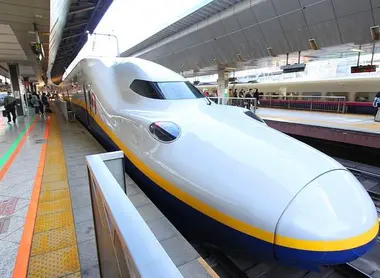
Punctuality and Efficiency
Shinkansen, trains, subways, buses: discover the most practical Japanese public transport for your trip.
The Japanese transport network is clean, reliable, punctual and often very comfortable! Whether traveling alone, with family or friends, using public transportation in Japan is a lot less complicated than it seems.
Trains in Japan
There is a large variety of trains in Japan required to travel from one region to another, but also to get around in cities. The three categories of trains that you'll have to use on a trip to Japan include:
- Shinkansen, the famous bullet train provides comfort and speed, for a very attractive price if you have the Japan Rail Pass . The Shinkansen allows - among others - the Kyoto-Tokyo routes, Tokyo-Hiroshima route and (since March 2015) Tokyo-Kanazawa. A must!
- JR trains: the former national railway company is now divided into regional entities, which each manage their own networks. If you're traveling in a single region, a JR Regional Pass is often the most economical way to get around.
- Private lines: these are extremely numerous in Japan and often offer an equivalent or better quality service than JR lines, often for a lower rate. Among the most prestigious are, for examples, the Hankyu train line that connects Kyoto and Osaka in just 45 minutes.
Japanese Subways
All major Japanese cities have their own urban subway lines. Punctual, safe, and never on strike, the Japanese subway is the preferred mode of transportation for residents of large cities such as Tokyo.
Knowing how to use the Tokyo Metro is essential when staying in the Japanese capital. The Tokyo Metro app can also help you navigate once you're there.
For longer stays in Tokyo, consider the purchase of a prepaid travel card such as the Pasmo , which will save you considerable time when taking the subway.
There is also an unlimited pass for travelers that can be used for 1, 2 or 3 days: the Tokyo Subway Day Ticket for easy travel across the Tokyo subway network.
Taking the Bus in Japan
City buses are rarely used within large cities like Tokyo or Osaka, due to the excellent rail and metro network.
Instead, taking a night coach to different parts of Japan makes traveling moderately priced, while saving on the price of a night in a hotel. Perfect for travelers on a budget!
Traveling by coach in Japan may also sometimes be less expensive than buying a National JR Pass.
But everything ultimately depends on your route in Japan, and duration of your stay!
Latest Articles

Hiroshima Sightseeing Loop Bus: Your Ultimate Guide to Exploring the City
The Hiroshima Sightseeing Loop Bus , locally known as めいぷるーぷ (Meipuru-pu), is an excellent way for tourists to explore Hiroshima.

Summer travel in Japan
Summer in Japan is a season of simple beauty and deep cultural significance.

Hiroshima Trams: A Comprehensive Guide to Japan's Longest Streetcar Network
Welcome to the world of Hiroshima's iconic trams, an integral part of the city's history and modern-day transportation.
All the themes of the city

Japanese Food and Drink

Books on Japan

Japanese Movies

Japanese Language

Japanese History

Understanding Japan

Before you Travel
Please select your country on the list below:
- Switzerland
- United Kingdom
- Other countries
- Tours & Experiences
- Tailor-made Trips
- Bahasa Indonesia
We are happy to see you again!
Continue with
Or use email.
No Account? Create one
Create account
Already have an account? Sign in
Quickly Sign up with
I agree to Japan Travel's Terms of Service and Privacy Policy . Terms of--> and acknowledge that Japan Travel's Privacy--> applies to me.-->
Email reset password link
Please check your inbox and click the link we will send to you.
- Transportation
Guide to Suica Cards
How to get a Suica Card and more

For a convenient and stress-free travel experience, both around Tokyo and in regions beyond, it’s worth investing in a Suica card. This debit-style transportation card is popular with both residents of Japan and visitors alike. Take the hassle out of trying to figure out metro routes and ticket costs by purchasing a rechargeable Suica card.
What is a Suica card?
Suica is a debit-style transportation card sold by the JR Rail Company in its Tokyo train station hubs, as well as in locations such as Haneda and Narita Airports. This distinctive bright green card with its penguin logo can be used almost indefinitely – it doesn’t expire unless a period of ten years has passed between uses, and any monetary balance remains unaffected in that time.
What are the benefits of having a Suica card?
Above all – convenience. With Japan still often considered a cash-based society , it pays to have a multi-purpose card that can take care of most of your travel needs, but the Suica IC card can achieve a lot more:
- Tap-and-go access to trains, buses and trams around Japan. More >
- Pay at vending machines, shops and restaurants. More >
- Access to luggage storage lockers at stations. More >

How are Suica and PASMO different?
Many first-time visitors to Japan may often wonder what are the differences between Suica and PASMO – another IC travel card often mentioned.
PASMO cards are transportation cards that are designed and sold by Tokyo Metro. Suica cards are designed and sold by Japan Rail (JR).
Aside from their outward appearance, there is virtually no difference in usage between the Suica and PASMO cards. For travelers or visitors staying near the center of Tokyo, which has an abundance of Tokyo metro stations, it may simply be easier to purchase a PASMO card from the nearest station instead of making the trek to a more outlying JR rail station.
How can I purchase a Suica?
Suica cards can be purchased from ticket machines in most of Tokyo’s main JR rail stations (ie Tokyo, Hamamatsucho, Shimbashi, Shinjuku, Shibuya, etc). English instructions walk buyers through the steps needed to obtain a card. Cards can be personalized or left blank – if personalized, a card that is lost can later be identified and reclaimed with proof of identification.
Cards require an initial ¥500 deposit, though this can be reclaimed when returning the card (inside the station) at the end of your holiday.
How to top up a Suica
Cards can be topped up immediately, or at regular intervals as needed. When charging the card, cash can be added in increments of ¥1000. Suica cards can hold a balance of up to ¥20,000. Only yen cash can be used to add money to a Suica card. Credit cards are not accepted.
You can also top up a Suica at most ticket machines, even at non-JR stations, such as Tokyo Metro, as well as buses that accept Suica/PASMO.
Did you know? If you are caught out and run out of charge on the card when arriving at a station, you can even top-up at special kiosks inside the gates before you exit. It reduces the need to worry about trying to calculate the exact fare between stations.
For children aged 6-11, a special youth Suica card can be obtained. Marked with the kanji for small (小), this card entitles younger users to a discount of 50% on the regular train fare. Youth Suica cannot be purchased at the self-service kiosks and must be bought in person from a JR staff member in one of the JR train offices. Presentation of identification or of the minor him or herself may be required.
Step-by-step guide to buying the Suica
- Find the nearest ticket vending machine.
- Touch the 'English' button on the right corner of the monitor to switch languages for easier use.
- Select 'Purchase New Suica' on the lower left panel.
- You'll have 3 options: MySuica (for personalization - useful if needing to reclaim a lost card), Suica and Charge.
- There are several options you can choose, from ¥1000 to ¥10,000 (including the deposit cost of ¥500).
- Insert cash.
- And finally, take your Suica card, change, and receipt.
Returning your Suica when leaving Japan
If you decide not to keep your Suica for future use, you may return it to any JR rail office.
If any amount of money over ¥220 is left on the card, the JR company will charge a fee of ¥220 to process a refund and return the remaining amount to you. If the balance is under ¥220, no refund is issued and the balance is zeroed out.
(This includes balances such as ¥80, that would end up in negative numbers upon subtraction of the refund fee. The balance is simply zeroed out with no penalty to the card holder.)
However, all customers will receive the initial ¥500 deposit back upon turning in the card.
Where can I use my Suica card?
Travel with suica.
Suica are most commonly used as transportation passes, which users simply tap over the ticket gate to gain entry to the train tracks and tap again to exit a station, where the fare for the journey is automatically calculated and debited. There is a small discount on single journeys for those that use a Suica pass compared to those that rely strictly on paper tickets.
While cards emblazoned with Suica are sold in Tokyo, these JR-sponsored passes are also usable on regional forms of transportation.
Since 2013, Suica can be used interchangeably with the regional IC cards, like Kansai's ICOCA and PiTaPa, Nagoya's TOICA and Manaca, Sapporo's Kitaca, Fukuoka's SUGOCA and Hayakaken and Kyushu's nimoca. Hiroshima's street car/trams also support Suica, as well as several other regional transport systems.
Note that continuous travel between different regions of Japan is not possible just on a Suica alone.
Shop with Suica
Suica can also be used to make purchases at vending machines marked with the card’s logo. Simply tap the card against the machine’s card reader, select the product of your choice, and tap your card a second time to complete the purchase.
Many convenience stores also now provide an option for Suica holders to use their card to pay for purchases. Look for the card reader at the cash register and follow the clerk’s instructions or the instructions on the screen.
Many restaurant chains also support payments by Suica – just look for the familiar green logo near the payment terminal.
Luggage Storage
A number of lockers in Japan have begun switching to a coinless system, where users access their bags with a Suica or other debit-style transportation card.
Often found in train stations, these lockers don’t require a key for entry, and instead provide an entry code to be used in conjunction with the Suica card when reclaiming any baggage.
- Public Transport
- Share on Facebook
- Share on X (Twitter)
- Copy link to share
By Sarah Endarastya
Community writer

Information
jreast.co.jp
Top Articles
- Recommended

Freshness Burger Okinawa Fair

Fairytale Experiences at Nukumori-no-mori

Guided Tour for Foreign Visitors to Experience Traditional Japanese Performing Arts and Learn About the History of Ginza!

Culture and Beauty In Ishikawa Prefecture

Introducing Nomad eSIM

A Foot Bath Path In Kaminoyama

Fūrin, the Symbol of Japanese Summer

A Comprehensive Guide to Nomad’s Japan eSIM

Sakura-tei: The World's Largest Okonomiyaki Restaurant

Princess Adachi Festival

A Guide to Japanese Visas

Guide to Bringing Medicines Into Japan

Your Name: Real-Life Locations in Tokyo

The Ultimate Guide to Thrifting in Tokyo

Daikoku Car Meet

Hachiko Statue in Shibuya

Japanese Urban Legends

Tokyo Auto Salon

Iwatayama Monkey Park

Nintendo Museum Coming Autumn 2024
More from this category.

Major Airports in Hokkaido

Convenient Bus Travel From Narita..

Cycling Rules in Japan
By Japan Travel

Uber Ride-Hailing Services Are..
By Veronica Carnevale
Join the discussion

Let us know how we can help.
Help us improve JapanTravel.com
We welcome any suggestions regarding this content. Your feedback is confidential and will be used to help improve this page.
Suggest an edit
https://en.japantravel.com/guide/how-to-get-a-suica-card/22316
Thank you for your support!
Your feedback has been sent.

- Intensive Japanese Courses
- Lite Intensive Japanese Courses
- Part-time Japanese Classes
- Private Lessons
- Language & Cultural Immersion Course
- JLPT Prep Courses
- Online Japanese Lessons
- JLPT Online Instruction & Exercise – 6 Month Course
- Self-Study Courses
- About Coto Japanese Academy
- Iidabashi Japanese Language School
- Shibuya Japanese Language School
- Yokohama Japanese Language School
- Minato Japanese Language School
- Our Teaching Philosophy
- Student Visa Support
- Meet the Coto Team
- Coto Podcast
- Corporate Solutions
- Customized Language and Cultural Experience Plans
- Japanese Blog
- All articles
How to Get Around Japan with Public Transportation: Buses, Taxis and Train
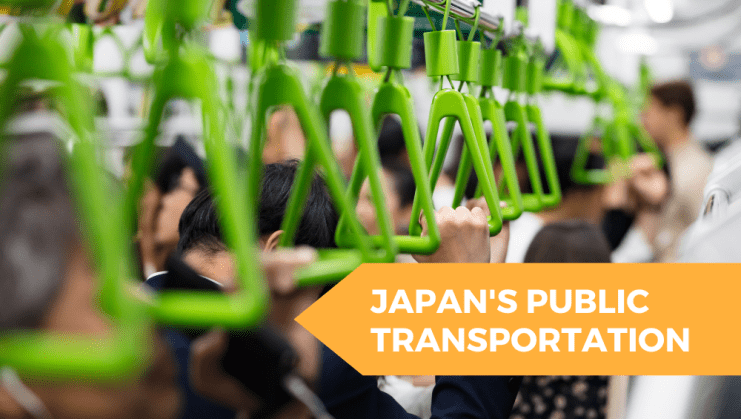
Japan’s known to have one of the most efficient and reliable public transportation in the world, but when you’ve just arrived in Tokyo (or worse, Shibuya), it’s still easy to get lost in the system simply because of the sheer scale of everything. From a vast network of trains, subways, and buses, you might wonder just how easy and convenient it is to use them. Should you hail for a cab in Japan, or rent a car instead?
Coto Academy has been welcoming new visitors in Japan, and so we want to help provide you with all the essential information you need to know about how to navigate Japan’s public transportation — like a local!
Want to explore or live in Japan with ease? One simple way to do that is by learning Japanese. Coto Academy offers online and in-person Japanese classes, with a focus on practical conversations. If you’re interested, contact us and we’ll get in touch!
Understanding Japan’s Public Transportation System
- Prepaid IC cads for Japan’s Public Transportation
- Rising Train and Subway in Japan
Riding the Shinkansen in Japan
- Bus: Short and Long-distance travel alternative
Taxis in Japan
- Other Available Public Transportation
Japan’s public transportation system consists primarily of trains (電車; densha), subways (地下鉄; chikatetsu), and buses (バス; basu). Other forms of public transportation include the shinkansen bullet train, car rentals, and even river and sea transport, but they’re usually reserved for long travels.
Among the many types of Japan’s public transportation, trains and buses is the most popular and widely used form of transportation in Japan. In Tokyo and similar major cities, local trains and subways are the most popular, while in rural areas, bus services are more widely available. For immediate access to your destination, taxis and rental cars are more expensive but at the same time more convenient options.
For long-distance travel, public transportation options include the Shinkansen bullet train, intercity buses, and domestic flights. And, since Japan is an island country, water transport has always been important for river travel and ferrying between islands.
Get Your Prepaid IC Cards Ready!
What’s good is that most of these transportation use prepaid IC cards. You can buy them is most train stations. Simply navigate the ticket counter (for JR stations, it’ll be the green counter area), and create a new card. The minimum you can charge is 1,000 yen, but this will include a refundable 500 yen deposit — so this means you technically only have 500 yen!
Once you’ve bought it, you can charge, and tap in and out of the ticket gate with ease! Local train fares are calculated by distance from a base fare. There is also a surcharge when changing to a different train line.
Using the JR Pass to Get Around Japan
You’ve probably heard of the JR Pass , right? It’s a special pass designed for foreign tourists to give them access to unlimited rides in JR trains all over Japan.
One thing to note is that while JR is one of the biggest train operators, not everything is operated by them. For example, if you are going to Roppongi Station, you’ll be riding the Tokyo Metro and Toei Subway, two train lines that are not under JR. This means you’ll have to rely on, again, your prepaid IC card!
Remember that Japan Rail Pass can only be used for tourists, and you can’t purchase it after you arrive in Japan. Instead, purchase the voucher through agencies like JTB, All Nippon Airways, Nippon Travel Agency, and other official affiliates.
Train and Subway in Japan
Japan’s train and subway systems are the most commonly used form of public transportation in the country, offering a fast and efficient way to get around. The biggest train operator is the Japan Railway (JR), which basically covers regions across Japan and most parts of Tokyo!
Luckily, the train system in Japan is extensive, particularly in major cities such as Tokyo and Osaka. The train and subway system is generally easy to navigate, with signs and train announcements in Japanese, English and other languages as well. Some stations however, like the Shinjuku and Ikebukuro Station, are famous for being confusing and difficult to navigate.
There are many train lines in Japan, but some of the most important ones are:
- JR Yamanote Line. A loop line that connects the most important areas in Tokyo.
- Tokyo Metro. A subway system that serves the Tokyo metropolitan area, including the central business district and popular tourist destinations.
- Keihan Line. A railway line that connects Osaka to Kyoto.
- Hankyu Line. Connects Osaka with its suburbs and other prefectures such as Kyoto and Kobe.
- Sannin Main Line. A train line that runs along the coast of the Sea of Japan in western Japan, connecting Kyoto, Hyogo, Tottori, Shimane, and Yamaguchi prefectures.
These train lines are important for both locals and tourists, as they provide access to major cities, tourist destinations, and other parts of the country. Many of these lines also offer a variety of travel options, including express trains, local trains, and commuter trains.
Read: How to Navigate the Japanese Train Platform
JR also operates the Shinkansen (bullet train), which is a high-speed train that travels between major cities. There are altogether 9 Shinkansen lines. The most profitable and busiest one is the Tokaido Shinkansen which connects the major cities of Tokyo, Yokohama, Nagoya, Osaka, and Kyoto. Since Tokyo is the capital of Japan making it an important hub for all sorts of activity, many of the shinkansen lines are connected to Tokyo, they are:
- Tokaido Shinkansen (Tokyo, Yokohama, Nagoya, Osaka, Kyoto)
- Tohoku Shinkansen (Omiya, Fukushima, Sendai, Morioka, Aomori)
- Akita Shinkansen (Omiya, Sendai, Morioka, Kakunodate, Omagari, Akita)
- Yamagata Shinkansen (Tokyo, Omiya, Utsunomiya, Fukushima, Yamagata, Shinjo)
- Joetsu Shinkansen (Tokyo, Omiya, Nagaoka, Niigata)
- Hokuriku Shinkansen (Tokyo, Omiya, Nagano, Toyama, Kanazawa)
You can purchase a shinkansen ticket from JR ticket counters called Midori-no-Madoguchi (みどりの窓口), ticket machines or online. Luckily, most of them have English options, so even if you don’t know a lot of Japanese, you can still navigate them with ease.
Shinkansen tickets come in two types: non-reserved and reserved seat tickets (make sure you double-check and read your tickets carefully)! Reserved seats are more expensive, but you’ll be guaranteed a spot throughout the journey. For non-reserved, this means you’ll be in the non-reserved cars and wait in line. It’s also not possible to ride a shinkansen using your IC card .
Buses in Japan
When you’re in big cities like Tokyo or Osaka, using the train is usually a sufficient means of transportation, and everything can be within walking distance. Still, if you’re traveling (or living) in the countryside or somewhere far from the station, using a bus is a way to go. There are buses operating within cities and towns, and they accept payment via cash and IC cards.
Buses within Tokyo’s 23 districts have a pay-first policy, which means you pay as you enter — usually 206 yen for adults using IC cards! For other buses, you’ll pay when you’re getting off, and the fee is calculated based on how many stops you take. You’ll tap twice: once when you enter the bus, and once more to pay for the fee.
Remember this, though! Buses will not give you any change when you’re using cash, so make sure you don’t use any big bills.
The downside is that buses can be slower than trains or subways as they are affected by traffic congestion and have very limited seating. Other than that, local buses in Japan only cover a short distance, usually within a certain neighborhood.
Highway and Long-distance Bus
Now that we’ve covered local buses, we’ll go over long-distance buses that connect major cities and towns across Japan. In major cities such as Tokyo and Kyoto, buses are a great way to explore the city at a slower pace and to visit more out-of-the-way locations that may not be accessible by train or subway. Many tourist destinations also offer sightseeing buses that allow visitors to see the main sights of the city in one trip.
You can get a highway bus ticket by location or purchase a Japan Bus Pass where you can ride highways buses all you want.
When you’re buying a single ticket, reservation, and payment in advance is usually required. You can use highways.com to reserve a ticket, and you can pay at a convenience store or using a credit card!
Taking a taxi in Japan is probably the most expensive method of transportation — at least in terms of distance-to-price ratio. It’s definitely a good choice if you missed the last train or bus (most trains stop operating around midnight), or if you’re too tired to walk!
If you see the word “空車 (kuusha)” which means “Vacant car”, that’s when you know you can call it. Simply raise your hand, and the taxi will stop for you. The passenger doors are operated by the drive.
To tell them where you want to go, you can say:
(Place)までお願いします。 (Place) made onegai shimasu To (place), please.
How much you’ll be charged depends on distance and time — but surcharges may apply. For example, it’ll be more expensive to ride late at night and early morning!
To give you a reference, 2 kilometers’ worth of taxi drive cost around 1,000 yen! l
You can look for taxis at train stations, as they have a designated waiting area (there’s usually a “Taxi” sign). You can also use apps like Didi, GO, S.Ride, and Fulcul, but they’ll be more expensive!
Other Available Transportation in Japan
And here are other forms of public transportation in Japan that are not used regularly in everyday life, but more on a need-to basis or for special occasions like going on vacation or visiting.
Domestic Airplane
Domestic flights can actually be cheaper than shinkansen! When taking a domestic flight, consider the cost, time, and distance to travel from the airport to the city center.
The major airlines in Japan that operate domestic flights include Japan Airlines (JAL) and All Nippon Airways (ANA), both of which offer a range of flight options and schedules to suit different travel needs. In addition, there are several low-cost carriers in Japan, such as Peach Aviation and Jetstar Japan, which offer affordable domestic flights.
Water and Sea Transport
Ferries are a popular way to travel between different islands in Japan, with regular ferry services operating between major ports such as Tokyo, Osaka, and Hokkaido. Ferries are also the main mode of transportation in Okinawa which is made up of many islands. There are places in Japan that are only reachable by ferry.
Car Rental and Car Share
For travelers that can drive, car rental and car sharing are two options available for exploring Japan at their own pace and on their own schedule.
There are several car rental companies in Japan that offer a range of rental plans and prices. Rental cars are suitable for full-day or multiple-day uses, but for short-term use, car share is a better option. Car share services in Japan include Times Car Rental and Careco. Car share cars can be found in neighbourhoods around Japan and typically charge by the hour. They offer the same flexibility as a car rental.
It is important to know the rules about driving in Japan beforehand. For non-Japanese driver’s license holders, an international driving license is required, though there are exceptions for license holders from certain countries.
There you have it! Unless you’re thinking of traveling around Japan, buses, and trains are typically enough to go about your daily life in Japan. Shinkansen can be more expensive than domestic flights, but it’ll definitely a good experience!
If you’re interested in learning Japanese with us, fill out the form below and we’ll redirect you to a booking page for our free online consultation!
What public transportation is there in Japan?
Train, subway, bus, taxi, aeroplane, water and sea transport, car rental, and car share.
What is the primary mode of public transport in Japan?
Subways and trains in major cities, and buses in rural areas.
How important is a prepaid IC card for using public transportation?
A prepaid IC card in Japan is only relevant for local bus, trains, and subway. It makes traveling easier and faster. Do note that shinkansen and long-distance buses do not accept IC cards as a payment method.
Test your Japanese level!
Recent Articles

Japanese Language & Cultural Immersion Course: Learn and Experience Japan

Ace Your Next JLPT Exam With Our JLPT Prep Courses

Start Learning Japanese With Coto Online Today, Available 24/7

Ultimate Guide to Passing the JLPT N2 Exam

Ultimate Guide to Passing the JLPT N3 Exam

Convenience Store (konbini) – Learning Japanese Survival Phrases
We use cookies on this site to enhance your user experience. If you continue to browse you accept the use of cookies on our site. See our Cookie Policy for more information.
- Media & PR
- Meetings & Events
- School Groups
- Travel Trade
- Select Language 简体中文 繁體中文(香港) 繁體中文(臺灣) India (English) Bahasa Indonesia 한국어 ภาษาไทย Tiếng Việt Singapore (English) Philippines (English) Malaysia (English) Australia/New Zealand (English) Français Deutsch Italiano Español United Kingdom (English) Nordic countries(English) Canada (English) Canada (Français) United States (English) Mexico (español) Português العربية Japan(日本語) Global (English)
- India (English)
- Bahasa Indonesia
- Singapore (English)
- Philippines (English)
- Malaysia (English)
- Australia/New Zealand (English)
- United Kingdom (English)
- Nordic countries(English)
- Canada (English)
- Canada (Français)
- United States (English)
- Mexico (español)
- Global (English)
- Fujiyoshida
- Shimonoseki
- Ishigaki Island
- Miyako Island
- Kerama Island
- Tokyo Island
- Koka & Shigaraki
- Hida Takayama
- Ginza, Nihonbashi
- Beppu & Yufuin (Onsen)
- Ginzan Onsen
- Nagasaki Islands

- Kumano Kodo
- Shikoku Karst
- Amami Oshima
- Hachimantai
- Omihachiman
- Aizuwakamatsu

- Diving in Japan
- Skiing in Japan
- Seasonal Flowers in Japan
- Sustainable Outdoors
- Off the Beaten Track in Japan
- Scenic Spots
- World Heritage
- Home Stays & Farm Stays

- Japanese Gardens
- Japanese Crafts
- Temple Stays
- Heritage Stays
- Festivals and Events
- Theater in Japan
- Japanese Tea Ceremony
- Cultural Experiences in Japan
- Culture in Japan

- Local Cuisine Eastern Japan
- Local Cuisine Western Japan
- Local Street Food
- Japan's Local Ekiben
- Japanese Whisky
- Vegetarian and Vegan Guide
- Sushi in Japan Guide
- Japanese Sake Breweries

- Art Museums
- Architecture
- Performing Arts
- Art Festivals
- Japanese Anime and Comics
- Japanese Ceramics
- Local Crafts

- Scenic Night Views
- Natural Wonders
- Theme Parks
- Samurai & Ninja
- Iconic Architecture

- Wellness Travel in Japan
- Japanese Ryokan Guide
- A Guide to Stargazing in Japan
- Relaxation in Japan
- Forest Bathing (Shinrin-yoku)

- Experiences in Japan
- Enjoy my Japan
- National Parks
- Japan's Local Treasures
- Japan Heritage
- Snow Like No Other
- Wonder Around Japan

- Visa Information
- Getting to Japan
- Airport Access
- COVID-19 Practical Information
- Anime Tourism
- Countryside Stays
- Sustainable Travel
- Accommodation
- Sample Itineraries
- Travel Agents
- Deals and Tours

- Traveling by Rail
- How to Travel by Train and Bus
- JR Rail Passes
- Train Passes and Discounted Tickets
- Scenic Railways
- Renting a Car
- Yokohama Cruise Port Access
- Travel Brochures
- Useful Apps
- Accommodation Types
- Online Reservation Sites
- Eco-friendly Accommodation
- Luxury Accommodations
- Traveling With a Disability
- Hands-free Travel
- How to Book a Certified Tour Guide
- Volunteer Guides
- Tourist Information Center

- Japanese Manners
- Sustainable Travel in Japan
- Spring in Japan
- Summer in Japan
- Autumn in Japan
- Winter in Japan
- Seasonal Attractions
- Monthly Events Calendar
- Cherry Blossom Forecast
- Autumn Leaves Forecast

- Japan Visitor Hotline
- Travel Insurance in Japan
- Japan Safe Travel Information
- Accessibility in Japan
- Vegetarian Guide
- Muslim Travelers
- Safety Tips

- All News & Blog
- Travellers Blog
- Guides to Japan
- Stories of Japan
- The Other Side of Japan
- Media Releases
- JAPAN Monthly Web Magazine

My Favorites
${v.desc | trunc(25)}
Planning a Trip to Japan?
Share your travel photos with us by hashtagging your images with #visitjapanjp

Travel Planner
Here are some useful sites to help with your trip planning:
- Jorudan Japan Transit Planner
- Japan Travel by Navitime
Transport Times & Distances to Major Cities
From Narita Airport (Tokyo)
- To Tokyo station: JR Narita Express train, 55 mins, 23 services daily, 3020 yen
- To Keisei Ueno station: “Skyliner” train, 41 mins, 21 services daily, 2,470 yen (all seats reserved) or Limited Express train, 85 mins, departs every 20mins, 1240 yen
- Airport Limousine Bus: Frequent services to Tokyo City Air Terminal (TCAT), 3000 yen; to Tokyo station, 85 mins; 3100 yen; to major hotels in Tokyo, up to 120 mins, 3100 yen; to Haneda Airport, 65 mins, 3100 yen
From Haneda Airport (Tokyo)
- To Shinagawa station: Keikyu Airport Express train, 20 mins, 410 yen
- To Hamamatsucho station: Tokyo Monorail, 20 mins, 490 yen
From Kansai Airport (Osaka)
- To Kyoto station; 75 mins by JR Haruka train, 3570 yen or 85 mins by bus, 2550 yen
- Osaka station: 65 mins by JR Rapid train, 1190 yen or Airport Limousine Bus, 1550 yen
- Shin-Osaka station: 50 mins by JR Haruka train, 2850 yen
- Tennoji station : 33mins by JR Haruka train, 2230 yen
- Namba station: 35 mins by Nankai Railways “Rapi-t” train, 1430 yen or by Limited Express, 920 yen
- Kobe Sannomiya station: 70 mins by Airport Limousine Bus, 1900 yen
- Nara: 85mins by Airport Limousine Bus, 2050 yen
- Osaka Itami Domestic Airport: 75 mins by bus, 1950 yen
Helpful Sites
- JAL oneworld Yokoso/Visit Japan Fare – Discount domestic air fare for overseas visitors to Japan
- Experience Japan Fare by All Nippon Airways – Discount domestic air fare for overseas visitors to Japan
- Japan Rail Pass – The most economical way to travel throughout Japan by rail
- Welcome to Tokyo Metro – Tokyo Travel Guide, Tokyo Subway Route Map and Ticket Information
Please Choose Your Language
Browse the JNTO site in one of multiple languages
- Itineraries
- Tours and Activities
- Travel Guides
- Best of Japan
JRailPass.com » Japan Travel Blog » 15 best apps for traveling around Japan in 2024
15 best apps for traveling around Japan in 2024
August 23, 2024
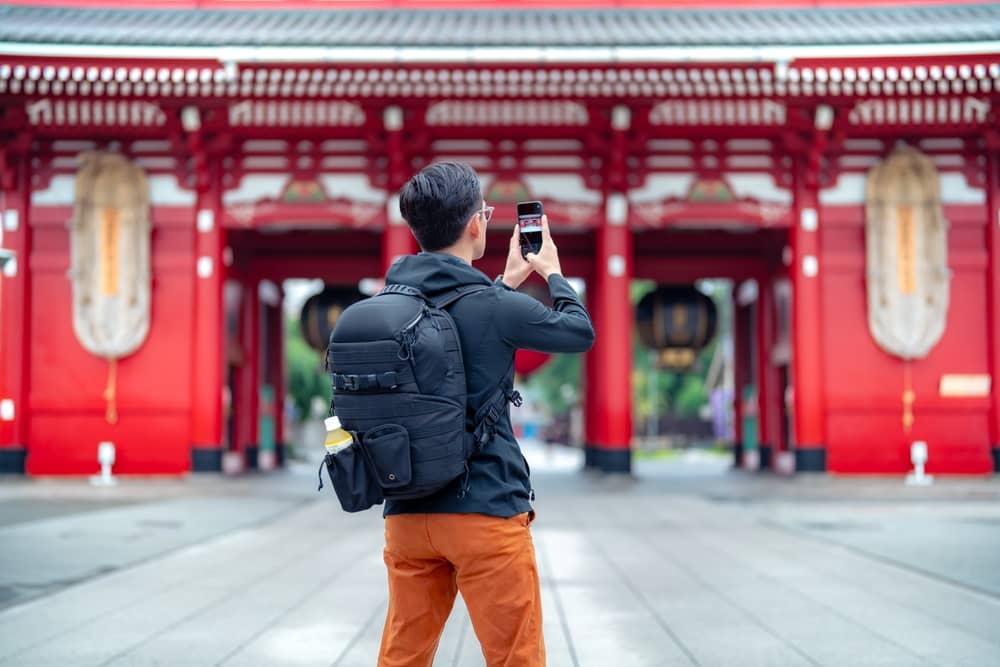
This article is dedicated to the most useful apps to check while traveling in Japan . If you are scared of the fact that you simply can’t cope with Japanese writing and will get lost either in translation or the extensive Tokyo Metro system – worry no more. Our app selection is here to save the day.
Below you’ll find a detailed list of the best apps for traveling in Japan, the type of service they provide, and how to use them when visiting the country with a Japan Rail Pass !
Navitime (Japan Travel by Navitime)
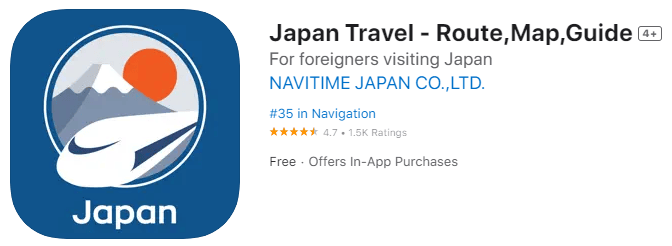
Navitime for Japan is a popular app that makes navigating around the Japanese capital and the rest of the country stress-free. Apart from providing detailed information about the world’s most complex metropolis ( Tokyo ), it also generates:
- Door-to-door route search
- Voice navigation
- New offline search for free WiFi spots
- A train stop list that will help you confirm you are headed in the correct direction
- Train delay information
- Platform details for each service
- Recent routes saved for offline searches
It can be downloaded for both iOS and Android and also features guides to events, art & culture, shopping , nightlife, and food & drink across Japan.
However, you should make sure you have an internet connection to be able to get the most out of it. If you’re looking for some great connectivity options for your stay in Japan, there’s nothing better than a Pocket Wi-Fi device, which can connect to a total of 10 devices simultaneously.
Japan Transit Planner (Jorudan)
Jorudan Co., LTD. is a Japanese company, which has developed an easy-to-use English transport app called Japan Transit Planner . Below you can see a screenshot of the PC version and the type of information it provides.
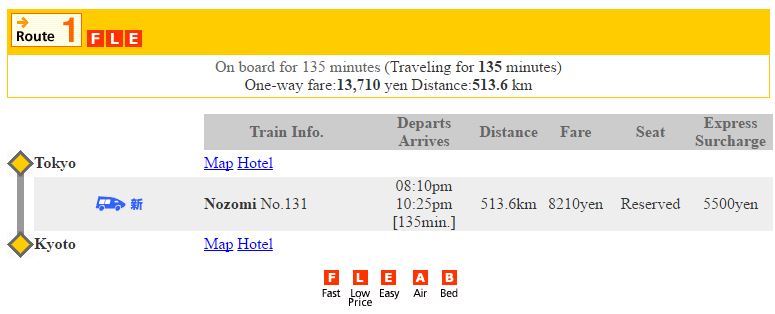
As you can see, this Rail Planner app tells you the distance, fare, type of seat on the train (reserved, non-reserved), including any surcharges that may apply. You’re given information about the duration of the trip and the total price, and you can also filter out services that aren’t covered by the Japan Rail Pass .
Japan Transit Planner is available for both iOS and Android systems. The app is free to download , but there is also a paid option that is ad-free and allows you to access route search/timetable history, customize search criteria, and other premium services.
Book your Japan Rail Pass now
Tokyo Metro Subway Map & Route
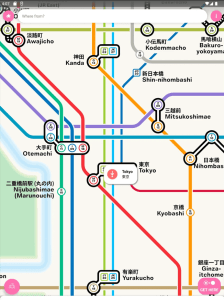
If you’re planning to make Tokyo your primary destination in Japan and spend a few days exploring the metropolis, then this app is essential!
Incredibly simple and easy to use, this app provides a full interactive map of the city’s Metro, Toei, and Yamanote lines . So you don’t need to waste time looking around for wall-mounted or paper route guides.
It also lets you navigate around the city through the route planner function and helps you find the quickest route to your destination (even if you aren’t connected to the internet).
It’s free to download for both iOS and Android systems.
Google Maps
Google Maps is one of the oldest and best-known transportation apps. Similar to the apps we’ve seen so far, the new Maps will guide you through any city, town, village or area in Japan , by showing all the optimal routes available at the moment of your inquiry.
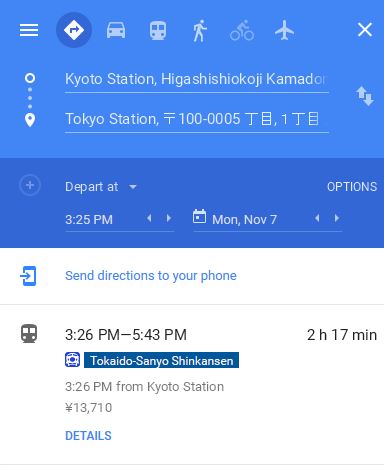
By clicking Details you can see the name of your train (in this example Tokaido-Sanyo Shinkansen is the bullet train line) and the time it will take you to get to your selected final destination.
The displayed cost is only valid for those who do not hold a Japan Rail Pass. The biggest advantage of this app is that it is more visual regarding location. Apart from your destination station, you can easily see nearby restaurants, parks, bars and more.
Available for both Android and iOS .
Available in more than 15 languages, this interactive map is similar to Google Maps, but can be used without an internet connection. SImply download the map of Japan when you’re connected to Wi-Fi and you can use it even when in internet dead zones!
Maps.Me also lets you import bookmarks from Google My Maps and use them alongside the built-in points of interest and custom pins within the app you create, even when offline. Also, it has a GPS function that can be used when you’re connected to the Internet.
Maps.me is free to download and use for both iOS and Android . However, if you want to remove the in-app ads, you can choose between 3 subscription options; weekly, monthly, and yearly.
Google Translate
If you don’t understand a lick of Japanese and want to make your trip through the country as hassle-free as possible, then downloading the Google Translate app is a must.
This app makes it easy to overcome the language barrier with functionalities such as:
- Instant text translation
- Voice translation
- Conversation mode that allows to translate back-and-forth speech in real time
- Voice playback that aids pronunciation
- Handwriting analysis and translation
- Translation of text in images through camera mode
The Google Translate app is also great because it allows you to download many different languages for offline translation from Japanese.It can be easily accessed from your computer, tablet, or Android or iOS phone .
This Japanese dictionary app is ideal for travelers who want to engage with the local language . Incredibly accurate in its translation, it not only provides you with Japanese words and phrases but also teaches you how to pronounce them correctly!
What’s more, the app is available in many different languages , including:
Imiwa? is an offline app, meaning you don’t need an internet connection to use it. Also, it’s free to download, but only available for iOS .
Tripadvisor
Tripadvisor is a top-rated app, used by millions of people all over the world. If you’re used to using to it in your own country, you can easily in Japan as well. It’s available for both Android and iOS .
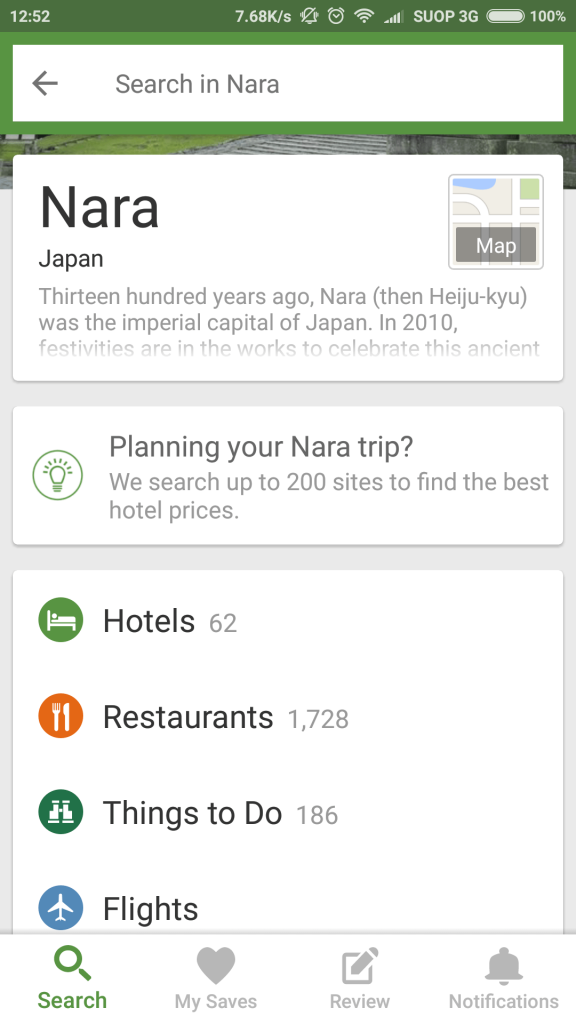
Tripadvisor gives you personalised options about:
- Places near you
- Restaurants
- Things to do
- Holiday rentals
- Destination guides
Having all of this information at the tip of your fingers will surely make a difference. Select your preferred food, price limit, personal interests and start discovering. The app is completely free of charge.
This easy-to-use app is a lifesaver for travelers in Japan needing temporary storage for their luggage.
It allows you to locate nearby storage facilities, securely store your bags, and pick them up at your convenience .
With a vast network of storage options , ecbo cloak lets you find a convenient spot near tourist attractions and stations. It permits you to free yourself from the burden of hauling luggage around, making your travel experience more enjoyable.
The app is not only budget-friendly but also boasts a straightforward payment system that allows for quick transactions . You can download it on both iOS and Android .
OMOTENASHI GUIDE
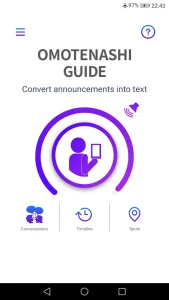
OMOTENASHI GUIDE makes it easier to understand Japanese by providing instant transcription of public announcements in various locations , including train stations and tourist spots.
When an announcement is playing in Japanese, simply open the app and press the on-screen button. The app will then display the translation instantly in the language you select .
By offering real-time translations, OMOTENASHI GUIDE ensures that all travelers have access to vital information , enhancing safety and convenience. It’s available for both iOS and Android .
Gourmet Navigator (GuruNavi)
Gurunavi is a great and easy to use restaurant-finder app for both iOS and Android . It lets you select your prefecture (Tokyo, Kyoto, Osaka, etc.) and the area where you are.
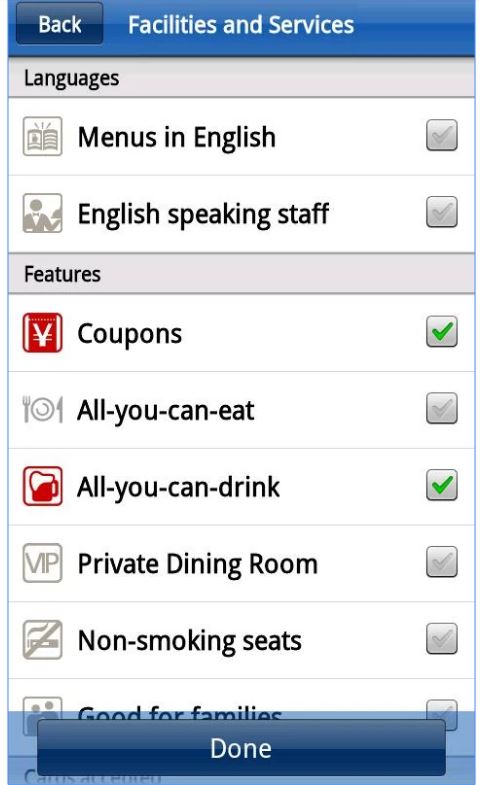
Once you have selected where you want to eat, the app shows you restaurant search results by cuisine such as:
- Sushi/Seafood
- Okonomiyaki/Takoyaki
- Yakiniku (BBQ)
- Izakaya (Typical Japanese pub)
- Dining bars / beer halls
Furthermore, there are some quite useful filters such as:
- Places with English-speaking staff
- All you can eat/drink offers
- Places with free Wi-Fi access
- Family-recommended
- Non-smoking restaurants
As the app tends to display a huge number of results and the search filters are limited, you might feel a little overwhelmed by all the restaurant options GuruNavi offers you. Still, it’s very useful if you want to find an option to eat out close by in the surrounding area!
While Gururnai is often considered the “Yelp of Japan”, good old Yelp is also incredibly useful in the country too! This top-rated app, used by millions of people all over the world, is relatively new in Japan, but is still a reliable resource for finding high-quality restaurants in the country.
Yelp not only offers reviews and ratings of restaurants so you can make an informed choice for where to eat out, but you can also use it to search for other businesses such as hairdressers and beauty salons.
You can also use it to make reservations and order take-out food . It’s available for both Android and iOS .
The Yelp app is completely free of charge. However, you’ll need an internet connection to access it. Apart from the amazing Pocket Wi-Fi option, you can also order a Data SIM card (internet only) that will give you direct access to the fastest internet connection available in Japan.
Sushi Dictionary
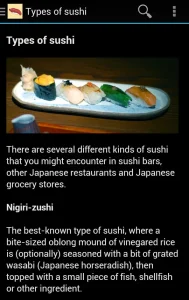
Navigating the world of sushi in Japan is made easy with the Sushi Dictionary app. This app is a must-have for sushi enthusiasts and travelers alike, offering a comprehensive guide to sushi terminology and fish types.
Here’s what makes it stand out:
- Comprehensive Content: Includes a complete glossary of fish and seafood, covering common sushi items and preparation styles.
- Visual Aid: The Image Searcher feature helps you visualize each type of fish, both fresh and as sushi.
- Audio Feature: Learn the correct pronunciation of sushi terms in Japanese, enhancing your dining experience.
- Sharing and Saving: Share your newfound knowledge with friends or save definitions for easy reference.
- Search Functionality: Easily search for terms in English, Japanese, or romanized Japanese.
- Additional Features: Access specialized sake terminology and a guide to yakitori menus.
Available for free on the Google Play Store , the Sushi Dictionary is an invaluable tool if you’re looking to deepen your understanding and enjoyment of sushi in Japan .
Ramen Beast
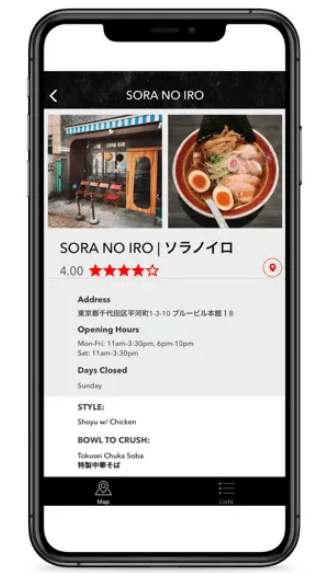
Ramen Beast is the ultimate app for enthusiasts of authentic Japanese ramen , guiding you to the best ramen experiences in Japan.
The app’s curated selection features over 700 top-rated ramen shops in Tokyo , carefully selected to avoid tourist traps and chain restaurants.
It provides detailed reviews, including information about the chef’s history , specialty ingredients, and unique aspects of each ramen shop.
Ramen Beast also offers English recommendations on what to order, making it accessible to non-Japanese speakers. It’s available to download for iOS only .
Tabelog is the go-to app for locals to discover the best dining experiences across Japan, offering an extensive range of restaurant reviews. It boasts:
- In-Depth Ratings : Known for its thorough rating system, Tabelog app provides reliable guidance on restaurant quality. Ratings above 3 stars indicate excellent choices.
- Extensive Database : With over 800,000 restaurants reviewed and more than 50 million reviews, Tabelog offers unparalleled insights into Japan’s dining scene.
- User-Driven Content : The app’s content is largely user-generated, ensuring authentic and up-to-date information.
While the app is only currently provided in Japanese, you can easily translate the content using Google Chrome , making it accessible to non-Japanese speakers. Tabelog is available for iOS users.
Related posts
Related tours & activities.
- Tokyo Cheapo (繁體中文)
Best Free Apps for Easy Traveling Around Japan
Smartphones are the new guidebooks, translators and maps of travel combined—and in Japan, they’re pretty much indispensable.
Even if you like to be old school, or managed just fine in the rest of Asia without one, in Japan a smartphone can seriously save you. Whether it’s the surprising lack of English (or the confusing examples that are there) or finding that random hostel you booked three months ago, sometimes having a digital friend can make all the difference. We would say this of course, being a website, but we also promise we’re telling the truth. To prove it—here are the best apps and websites for traveling in Japan. Read it, try them, have a great trip and then email us to say thanks (only kidding, it’s Japan—you’ll have to fax our robot secretary).
- 1. Transport Apps
- 2. Food and Restaurant Apps
- 4. Language Apps
- 5. Money and Conversion Apps
- 6. Safety Apps
- 7. Bonus Social Media Apps
One thing to be aware of : Japanese websites and often apps too, are not known for their great interfaces. Not sure why they haven’t quite caught up here, but keep in mind that even the newest apps—if created by Japanese companies—might seem clunky, unintuitive and sometimes just downright bad. We suggest you try a few and see which ones work for you.
1. Transport: The big one

Trains are a fantastic way to travel, from the bullet train to the metro. Working out the best routes and the times can be a bit confusing though, just take a look at the metro maps in Tokyo for inspiration there. For this, we suggest that you combine two apps (or an app and a website anyway).
Google Maps (we know, keep reading)
We suggest Google Maps to figure out where your nearest stations are. It’s an obvious one, we know, but it’s a good one, especially when paired with our other suggestions. For actual A–B transport it’s pretty reliable in Tokyo too, but less so elsewhere. Download the areas you’re traveling to beforehand if you’re not getting wifi, and pre-save locations, then you can find them offline!
Pros : Great for location, especially if offline and lost Cons : Have to download sections in advance Available on: Android and Apple
Hyperdia: For A–B travel
- For figuring out the actual journeys,
- Hyperdia is your friend.
Available in English, Japanese and Chinese, this site is updated very regularly with information from Kotsushinbunsha, so it’s about as reliable as it gets. The only issue is you need to know your stations before you start (which is where Google Maps comes in). Giving you full train routes across the country with the added option of selecting (or excluding) not only bullet trains but JR Pass–friendly ones, it soon becomes indispensable. There are also options for highway buses—check them out if bullet trains start looking too pricy!
Pros : App allows first and last train search (website does not) Cons : Needs station names Available on: Android and Apple
Tokyo Subway Navigation: Get to know Tokyo
For specific Tokyo travel, this app is good for getting to know the city. It navigates around a detailed subway map and gives you a simple time, price and transfer list alongside the line you need to catch, and the direction. You can choose from entering station names or finding the station on the map. This makes it great for figuring out routes and getting to know Tokyo.
Note: There is a ‘for tourists’ version of this app—but we’re not entirely sure why, except you might just prefer the interface which is a bit cleaner and allows you to navigate between lines, stations and services like Lost and Found. This app doesn’t work offline, which is odd as the regular app does.
Pros : Handy map for familiarization and works offline Cons : Intense for cartophobics Available on: Android and Apple
Suica Card: Track your travel
If you’re already planning to use a Pasmo or Suica Card , firstly, well done, and secondly, why not app it up? You can use The official JR Suica App to track the balance, load and use tickets on your phone which is super handy—but it’s currently only available in Japanese and on iPhone. For Android users, you can connect your Suica to Google Pay instead. For Pasmo users you can . . . get a Suica? There isn’t an official Pasmo App at the moment, but there are some unofficial options out there (this is also the case for Android Suica users).
Pros : Can be linked to Apple or Google Pay Cons : Only in Japanese, not always smooth running, no Pasmo app Available on: Android and Apple
2. Food: Avoid getting hangry

With over 160,000 restaurants to choose from, and only our reccomendations to help you (only kidding—but not really), finding dinner can become slightly overwhelming after a day’s worth of sightseeing. While there’s a solid point to be made for wandering into whichever spot tickles your fancy, there’s also a good one for going to great places you’ve previously looked up.
Tablelog (search for 食べログ)
This is the food bible of Japan, and while it is in Japanese, Google Translate/Chrome is your friend. Tabelog has photos, extensive reviews and a tough rating system though. The general rule is that anything over 3.5 stars is decent, anything above 4 is great and if you see a 4.5 it’s exceptional (and rare). If you have the time and patience, you can translate the reviews to find reccomended dishes, or just use the main page to check stars, location and photos.
Pros: Extensive and peer reviewed with lots of details Cons: Crowd sourced, so sometimes info can be a little inaccurate Available on: Android and Apple
Gurunavi: The food encyclopedia
The contender for biggest food encyclopedia of Japan, Gurunavi (short for “gourmet navigator”) is a huge compendium of dinner options. Available in English, it is certainly more tourist user–friendly, allowing you to select down to very specific categories. You can see average prices, availability of English-speaking staff, address, nearest station—it has everything, except ratings. So, potentially check out locations here, then see their rating on the Tabelog website.
Pros : Huge amount of information Cons : No peer reviews so no clue on quality Available on: Android and Apple
Happy Cow: Go green
If you’re vegetarian, vegan or otherwise specific about your food then Happy Cow is your new best friend. Providing locations, ratings and reviews of all the veggie-friendly establishments in the area, Happy Cow is the easiest way to find meat-free meals in Tokyo (and beyond). If you pay for the full app, you can save locations offline, otherwise the free version works fine, You can even search cities in advance.
Pros : Reliable due to customer reviews and updates. Cons : Can’t save locations offline, iOS version not free Available on: Android and Apple (not free)
3. Wifi: Keeping connected

If you’re not planning on renting portable wifi , or getting a SIM card during your stay in Japan, then finding free wifi will become your new hobby. To make your life easier (and less Starbucks orientated) you can download these apps (in advance) and get on the net, as the cool kids say. This is our best list of cafes to go for wifi , so if you pair them up, you’ll be living the life of a well-connected and well-caffeinated riley.
Travel Japan Wi-Fi: All the wifi
With over 200,000 hotspots across the country this app lets you connect automatically, eliminating the annoyance of signing in eight-thousand times a day. The map function allows you to find the nearest spots and can be downloaded to work offline which is great. The spots to look out for are the blue-lettered Wi2 (and many variations)—you’ll start seeing them everywhere and can get pretty strong connectivity.
Pros : Has offline map, autoconnects to nearest hotspots. Cons : Requires social media log-in. Available on : Android and Apple
Japan Connected Free Wifi: Almost all the wifi
Another similar app with 170,000 spots and auto-connect features to avoid constant signing-in. The app has a map function too and works in 16 languages, which is pretty impressive.
4. Luggage storage: The Ecbo App

4. Language learning: Get talking

Even if you’re only here for a few days, the ability to get a few sentences out and recognize the odd character can be really helpful. If you’re a keen linguist, you might be well on top of this already—general language apps like Memrise and Duolino are good for building vocab and basic grammar. Meanwhile, WaniKani, Obenkyo and Anki all offer a more in-depth experience—the ones below will be great while you’re on the move though.
Google Translate (Again, we know—keep reading)
While you have probably used it here and there, Google Translate has a couple of features that really make it stand out. The best one is the camera function—see a sign, snap a picture and read the contents (it’s especially perfect for menus). Remember to save the Japanese option for offline use and try the writing option too if your camera can’t read handwritten kanji. As an add on to this, use Chrome when you can—it auto-translates websites which helps when researching.
Pros: Camera option makes menus a breeze Cons: Are there any? Available on: Android and Apple
Imiwa and Yomiwa: In-depth Google Translate
If you’re aiming to learn while you go, Imiwa and Yomiwa are similar to Google Translate in function, but also offer explanations of kanji and their radicals (the lines that make them up). These apps more for middle-range learners and great if you want to learn new kanji you spot when out and about. Imiwa has writing and reading practice while Yomiwa has the camera app—those with iPhones can combine the two for a stacked version of Google Translate.
Pros: Yomiwa works offline, Imiwa has a camera function Cons: Imiwa is only available on iPhones Available on: Imiwa is only available on Apple . Yomiwa is available on Android and Apple
Dr. Moku’s Hiragana & Katakana: Easy learning
If language learning isn’t really your thing, this app can be a fast way to learn the two phonetic alphabets: hiragana and katakana (not kanji, the Chinese symbols, although there’s a version for that too). The app employs the mnenomics method—using visual keys to help you remember each symbol’s corresponding sound. Learning these two alphabets can be very handy; hiragana can often be found written above kanji so children can read them, it’s especially handy for train station signs. Katakana is used for foreign words and is usually found on menus—so if you combine the two you’ll have a real head start without worrying about grammar. Note : Only the trial is free, so give it a go and if it works for you, it’s worth it.
Pros: Visual approach to learning Cons: Full version not free Available on: Android and Apple
5. Cash money: Currency converters and paying on the go

Japan is a cash-based nation and making sure you have some (and knowing how much) is key to having a good time. Flashing your Mastercard, Visa or Amex isn’t going to help you much in Japan, unless your in a large store or hotel. While the rest of the world has moved to contactless and beyond, here you’ll need to find ATMs and have backup cash on you. If that makes you nervous, remember Japan’s low crime rate (when it comes to theft).
The XE Currency Converter: How much is that exactly?
Remembering exactly how many thousands of yen make a few dozen dollars can be pretty confusing, especially if you’ve been country-hopping for a while. The XE app provides up-to-date conversions between dozens of different currencies and allows personalized settings. You can send money, check the exchange rates and track up to ten currencies at a time, allowing you to plan ahead if you’re moving on. If you’re looking to send money to Japan we have some tips , and a few for if you’re sending it back home as well.
Pros: Easy to use, allows personalization Cons: Source currency selection annoying to change Available on: Apple and Android
Google and Apple Pay: Skip the coins
Japan’s issue with cards is one of trust, and having pre-loaded cards like Suica or Waon is much more popular. The cards are accepted in lots of chain stores as well as being used for transport (in Suica’s case) and have now been linked to Smart Payment Systems Apple and Google Pay. This weird intersection of technologies is not yours to question, but you can make the most of it and use the apps to connect to cards and pay using home funds. We don’t suggest you rely on this for all costs but pair it with cash as well, as many places still don’t accept anything but the real deal.
Pros: Reduces amount you’ll need to withdraw, good backup Cons: Requires Suica or WAON to connect to, only accepted in some locations Available on: Android and Apple
6. Emergency and safety Apps: Literal lifesavers

So along with cherry blossom and hot springs, Japan’s close ties with nature also mean pretty frequent natural diasters (compared to most countries). Earthquakes, flooding and landslides are the most common, and while we’re not trying to bring down your holiday mood, if the worst does happen, it’s better to be prepared. While Japanese phones have in-built systems to notify you, many still prefer the app below. While you’re here, there’s also personal disasters to consider as well. Break a leg on a night out? Need some emergency dental treatment you weren’t expecting? There’s an app for that too …
Yurekuru Call: Earthquake early warning system
This is the most popular app in Japan for earthquake warnings, offering a good early notification system (often faster than built-in phone options) as well as info on the quake’s epicenter and strength. You can set your location as well as threshold for notifications based on seismic strength. The app works in English and allows for the option to be notified of early warning drills should you wish to participate. While all systems only offer a few seconds warning, they can give you time to get into a better position.
Pros: In English, allows personalization. Cons: Location use while offline can affect battery Available On: Android and Apple
Japan Hospital Guide
If you’re not indestructable (and even if you think you are), this app can be a lifesaver if you have an accident. Hospitals in Japan are a bit of a nightmare (closing for lunch, closing on weekends, closing on alternate staff member’s birthdays, and so on) and that’s before we even reach the language barrier. Luckily, the Japan Hospital Guide offers A Google Maps–based navigation system for clinics and hospitals including opening times, contact numbers and directions. Keep in mind that the app requires your location to function, so give it access in advance.
Pros: Easy interface, provides nearest to location. Cons: Crashes more following recent update Available on: Android and Apple
7. Social media special mention: LINE

There are a few apps that can be really handy, but don’t quite fit into any of our categories. LINE is an app only really used in Japan and was launched to help with communication following the 2011 Earthquake in Eastern Japan. It’s a messaging app and although there are timelines and profiles, etc., most people don’t really bother with that. LINE is good for adding new ‘friends’ you don’t necessarily want to add to your real-life social media (meta much). The messaging app allows for calls and blocking, so use them as you wish. It is also used by lots of stores and sites for discounts (scanning QR codes, etc.), so if you’re planning on shopping it can be handy to have.
Pros: Great for creepers and discounts Cons: Annoying to set up—requires a phone number (so set it up before you leave for Japan) Available on: Android and Apple
- Japan travel
- Japanese language
Get our Tokyo Cheapo Hacks direct to your inbox

When is the Best Time to Visit Japan?

Renting a Pocket Wifi Router in Japan: The Best Options

A Beginner's Guide to Shibuya - Scramble Crossing, Shopping & Great Views!

Hakone Day Trip from Tokyo

TOP 20 Things to Do in Shinjuku, Tokyo

Best Budget Sushi Restaurants in Tokyo

What to do on a Rainy Day in Tokyo

We Asked: What’s Your Biggest Fear on a Trip to Japan?
Natural disasters ranked highly — but that's not all we found out.

Complete Guide to the Akita Shinkansen
Routes, rail passes, recommended stops — and more.

Ultimate Guide to the Yamagata Shinkansen
The only thing you need to read about this bullet train.

Japan eSIMs With Unlimited or Nearly Unlimited Data
We compare heavyweight plans with 100GB, "somelimited" and truly unlimited data.

11 Things To Do Around Kawaguchiko Station
Forget about the controversial Lawson — here's what you should be looking at.

The Japan Bus Pass: Does Road Beat Rail?
It's cheaper than the JR Pass, and not just available to tourists.

A Case for Luggage Delivery in Japan
For hands-free travel around the country.

The Tokyo Wide Pass: Everything You Need To Know
This discount pass is available to foreign residents and tourists alike. See what you can do with it.

New Video! When is the Worst Time to Visit Japan?
Winter, spring, summer, or fall? It can be hard to know the best time to book your Japan trip for.

Taste of Hakone: Easy Day-Trip Itinerary
From hot springs and museums to shrines and pirate ships, here's our DIY guide.

New Video: Tokyo's Best Airport — Flying into Narita vs. Haneda
Which one should you use when flying to Tokyo?

The Hokuriku Arch Pass: Taking the Slow Route Between Tokyo and Osaka
Meander along Japan's "golden route" — exploring Nagano, Kanazawa and more.

Navigation menu

IMAGES
VIDEO
COMMENTS
Transportation in japan | Plan
How to travel by train and bus in Japan | Guide
Transportation in Japan - japan-guide.com ... Transportation
Guide to Suica Cards. Sarah Endarastya. Suica is a rechargeable transportation card from JR recommended for traveling around Japan via train or bus. This convenient card.. 33 2. Flights.
GUIDE Traveling by Rail
Additionally, air travel connects Japan's islands and remote regions efficiently, and ferries offer unique travel experiences along coastal areas. Overall, the array of transportation options in Japan ensures visitors can easily find a mode that fits their preferences and travel plans, making their experience in exploring the country hassle ...
Japan Travel by NAVITIME - Japan Travel Guides, Transit ...
Tips for Bus Travel in Japan. Bus Passes: In tourist-friendly cities, look for day passes that offer unlimited travel on local buses. Boarding and Alighting: In most cities, you board the bus from the rear door and exit through the front door. Pay the fare when alighting. Timeliness: Japanese buses are known for their punctuality. Arrive at the ...
Transportation in Japan: An Intro to Travel in Japan
Japan's public transportation system is highly-regarded for its efficiency and punctuality. It makes travelling to any part of the country easy and convenient for locals and tourists alike. Long-distance travel There are a number of options to choose from when it comes to long-distance travel within Japan. Which one to use depends on a variety.
Tokyo: Getting there and around
Punctuality and Efficiency. Shinkansen, trains, subways, buses: discover the most practical Japanese public transport for your trip. The Japanese transport network is clean, reliable, punctual and often very comfortable! Whether traveling alone, with family or friends, using public transportation in Japan is a lot less complicated than it seems.
Top ways to commute in Tokyo. 1. Train and subway. Commuting via railway is famous as the top-recommended mode of public transport in Tokyo for good reason. Japan's railway transport system, comprising train and subway networks, is one of the most well-connected and efficient in the world.
Guide to Suica Cards - Transport
Japan's public transportation system consists primarily of trains (電車; densha), subways (地下鉄; chikatetsu), and buses (バス; basu). Other forms of public transportation include the shinkansen bullet train, car rentals, and even river and sea transport, but they're usually reserved for long travels. Among the many types of Japan ...
Travel Planner - Japan National Tourism Organization ... Travel Planner
15 best apps for traveling around Japan in 2024
6. Safety Apps. 7. Bonus Social Media Apps. Smartphones are the new guidebooks, translators and maps of travel combined—and in Japan, they're pretty much indispensable. Even if you like to be old school, or managed just fine in the rest of Asia without one, in Japan a smartphone can seriously save you.
6 Best Japan Transport Apps for Travelling to Japan 2024
Rome2Rio makes travelling from Japan to Omsk easy. Rome2Rio is a door-to-door travel information and booking engine, helping you get to and from any location in the world. Find all the transport options for your trip from Japan to Omsk right here. Rome2Rio displays up to date schedules, route maps, journey times and estimated fares from relevant transport operators, ensuring you can make an ...
On 11 October 1984, a Tupolev Tu-154B-1 operating as Aeroflot Flight 3352 crashed into maintenance vehicles occupying the runway at Omsk. 174 of the 179 people on board were killed, along with 4 of the maintenance crew. The ground controller on duty had allowed maintenance work to be done on the runway (against regulations) and promptly fallen asleep, while the pilots were unable to see the ...
THE 15 BEST Things to Do in Omsk (2024)
Omsk - Travel guide at Wikivoyage